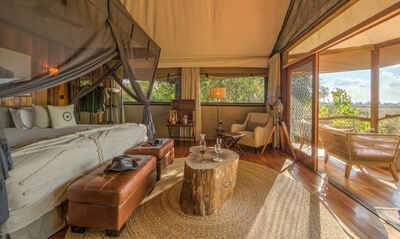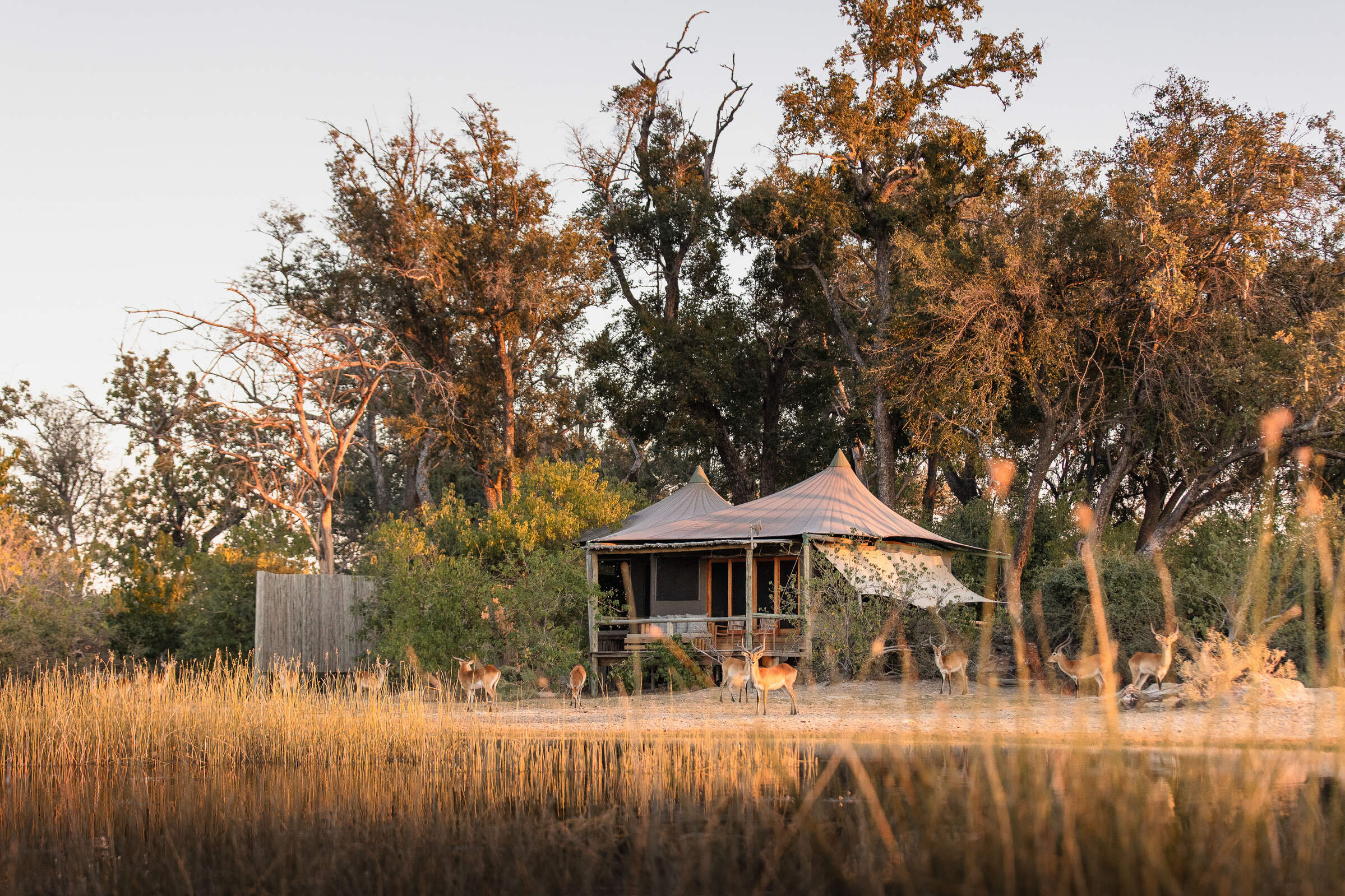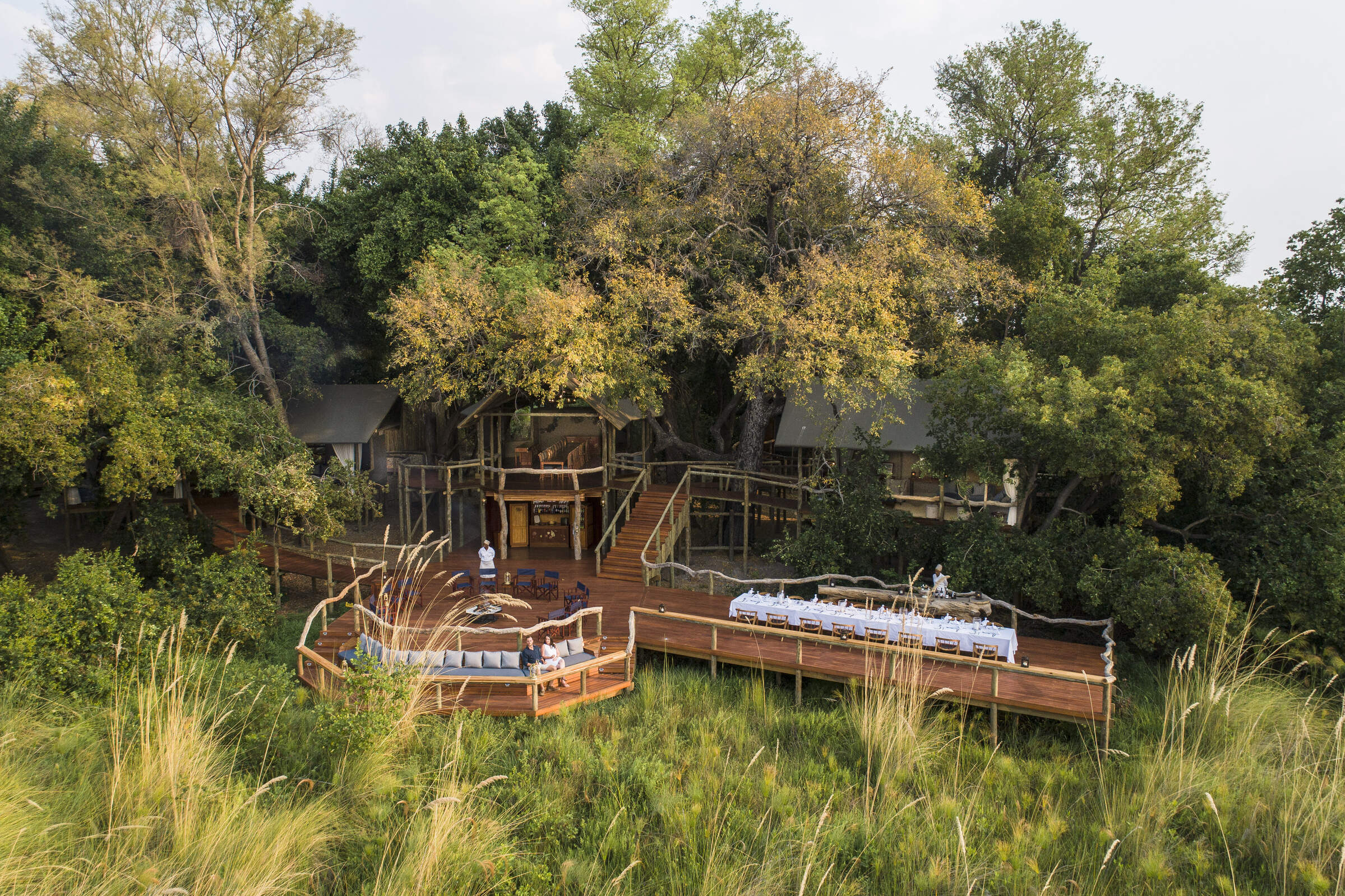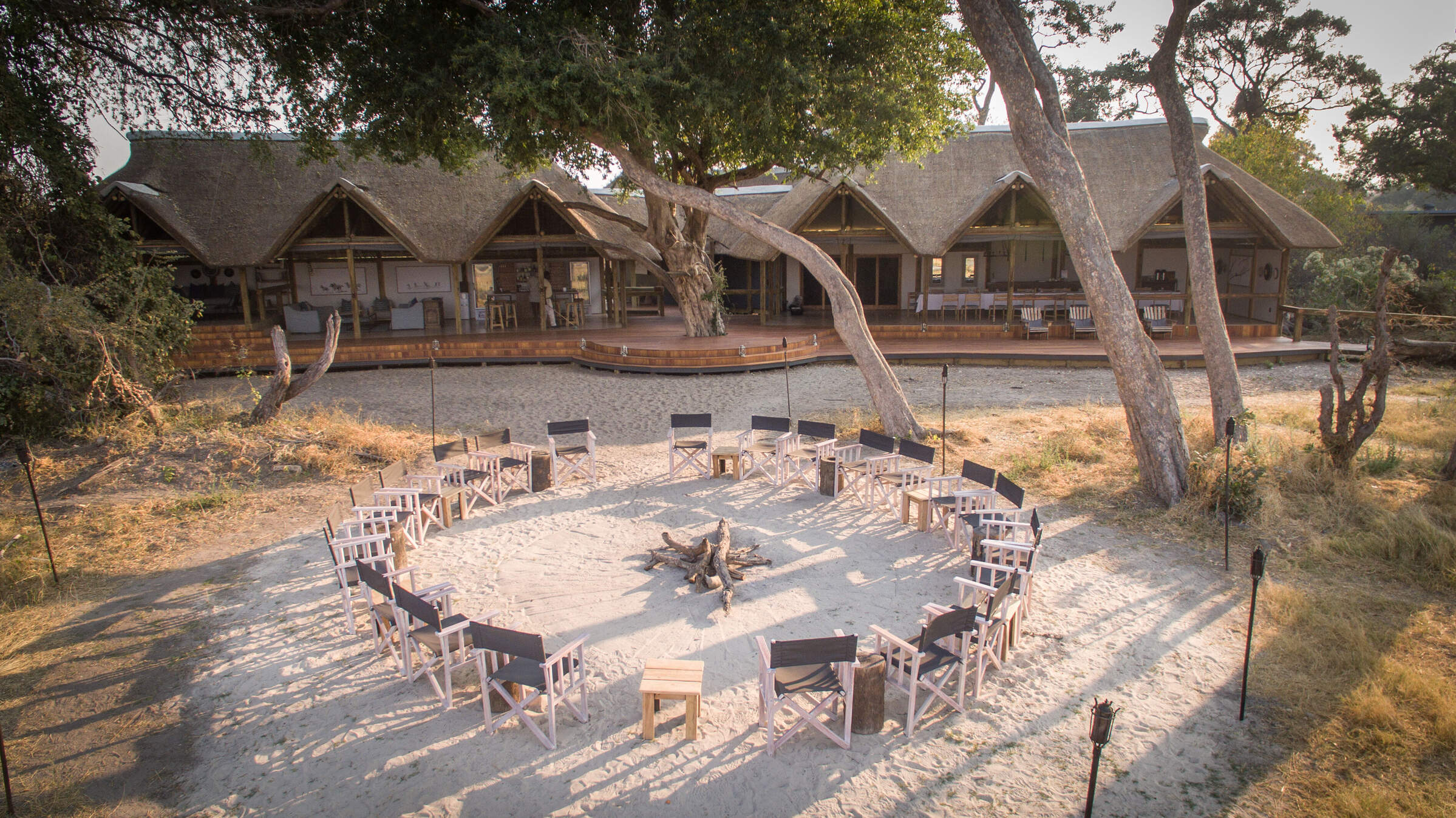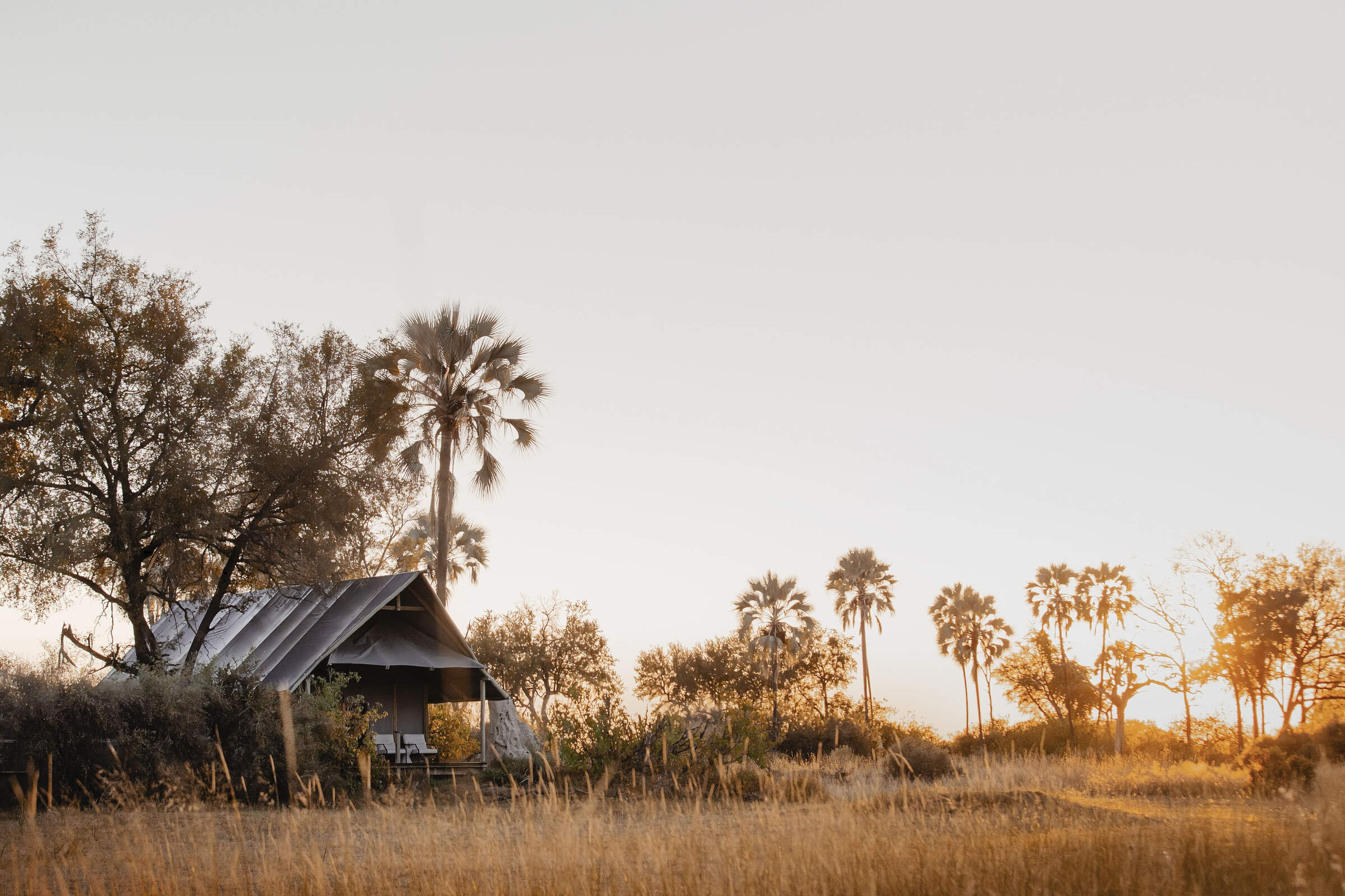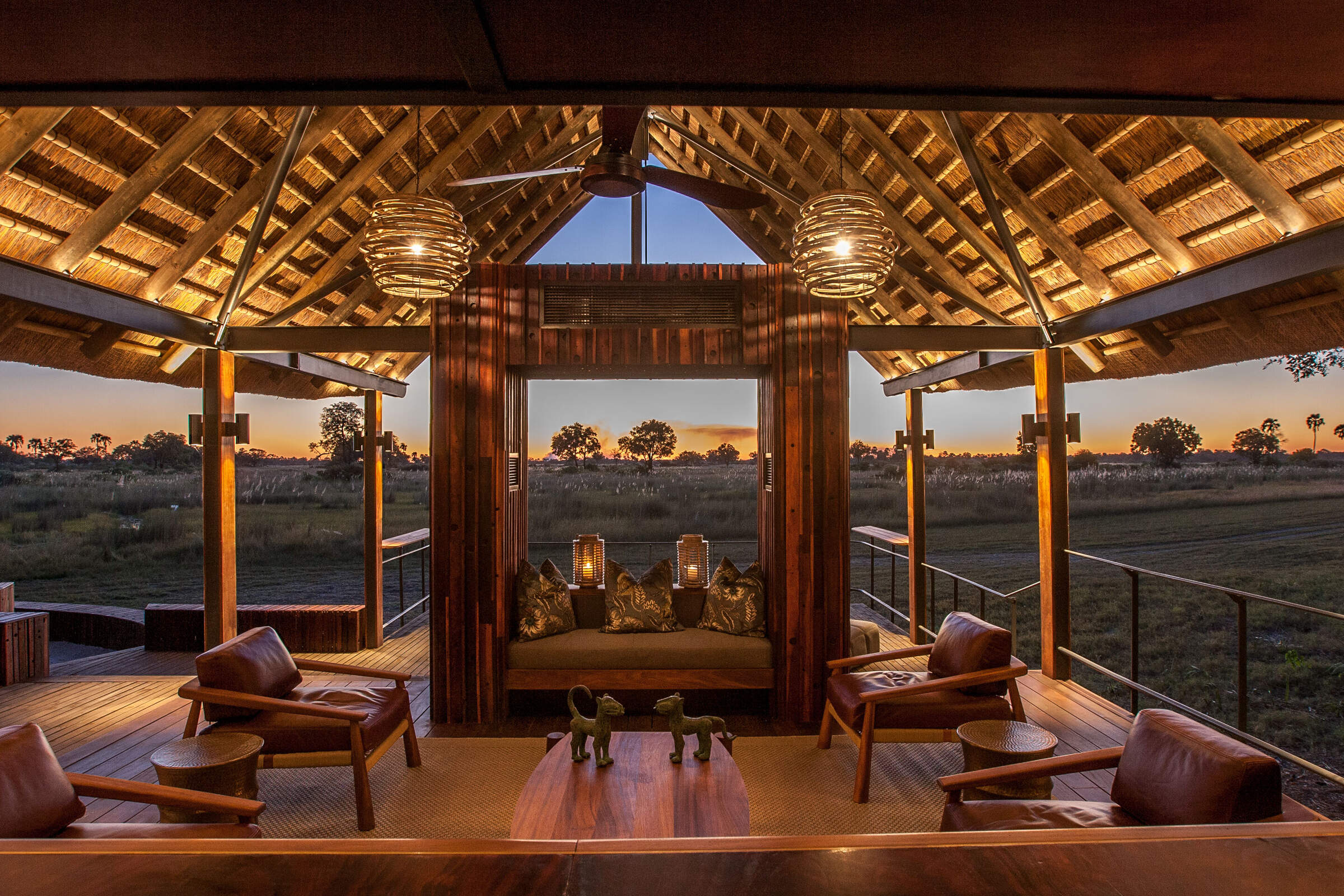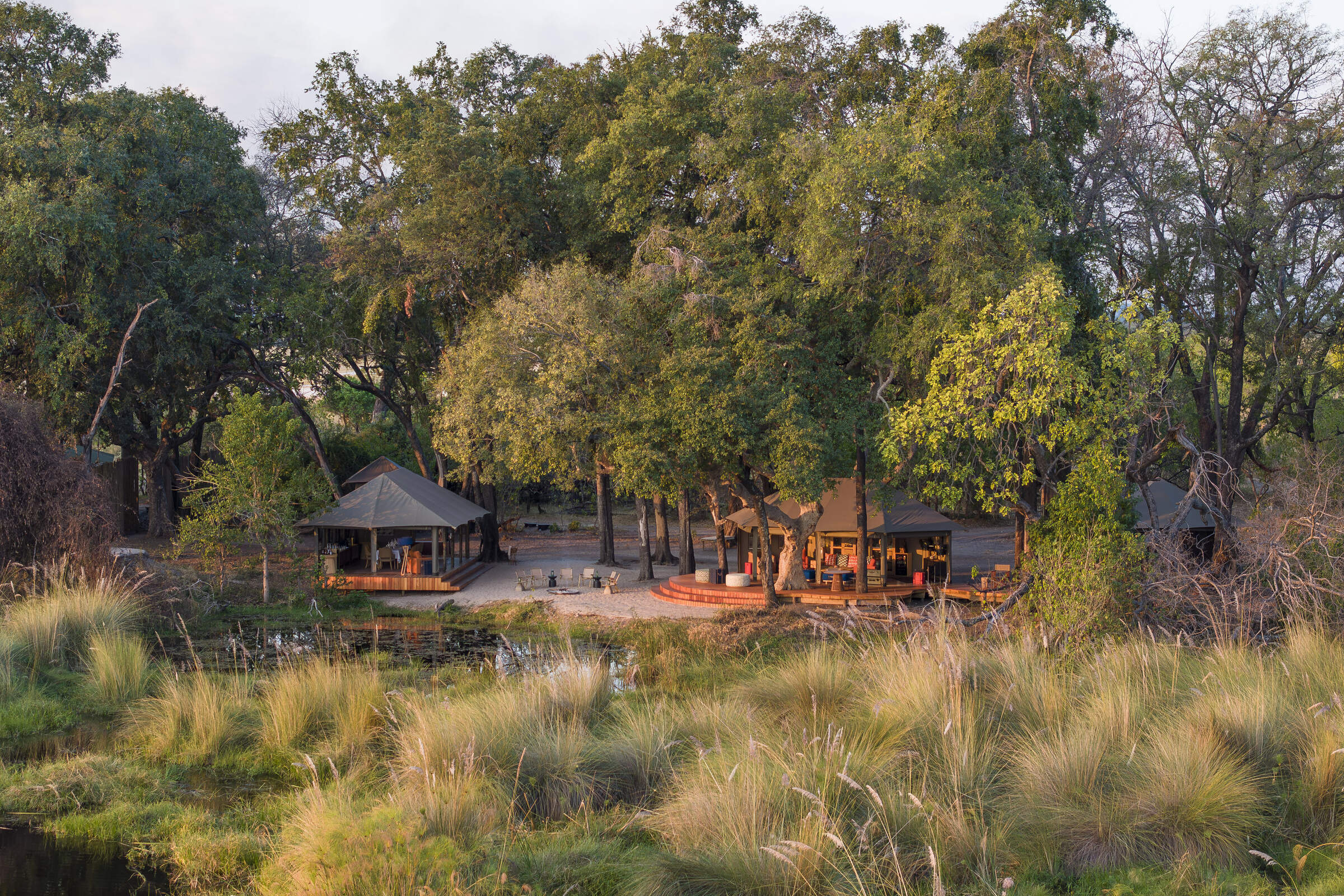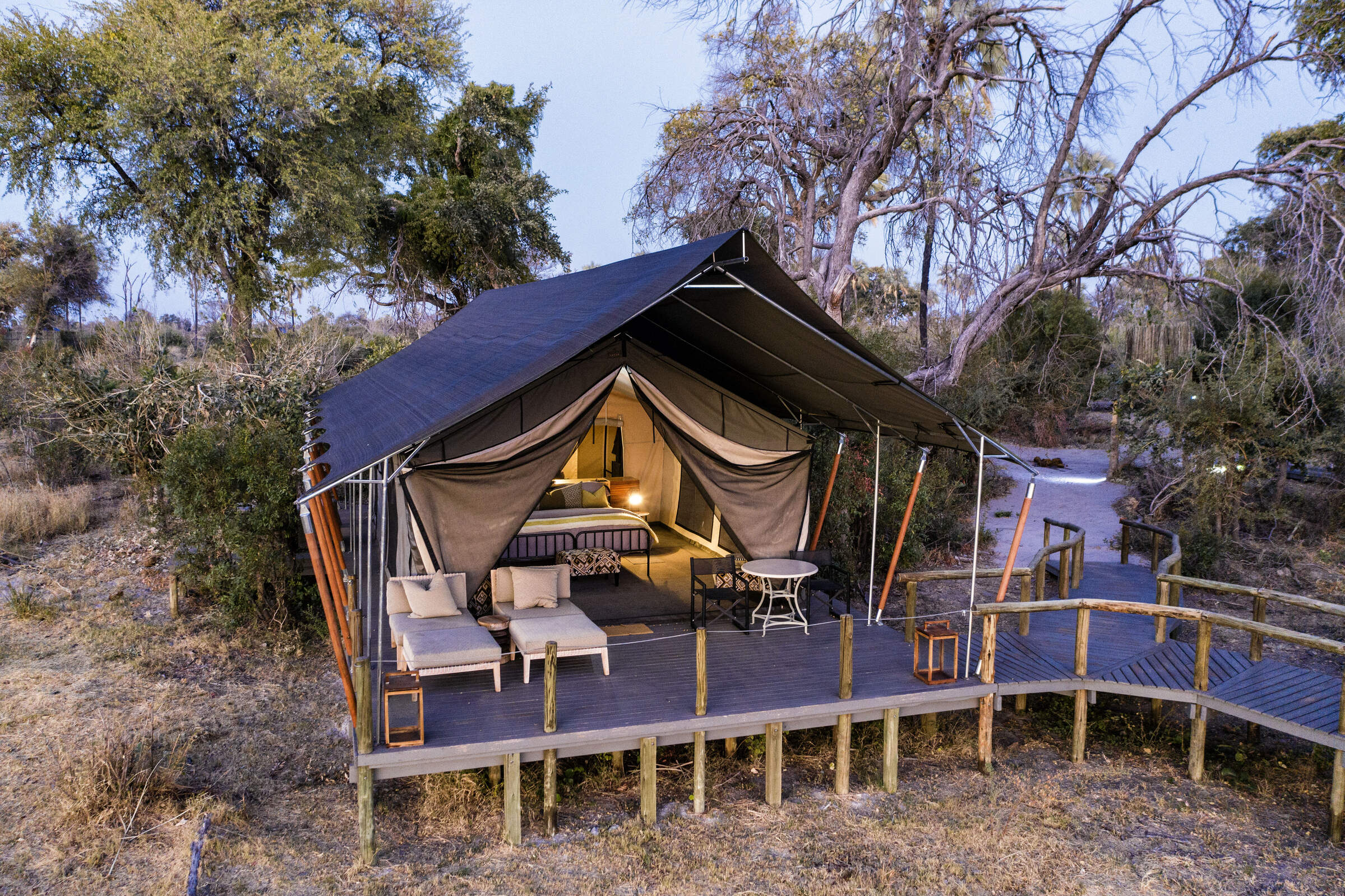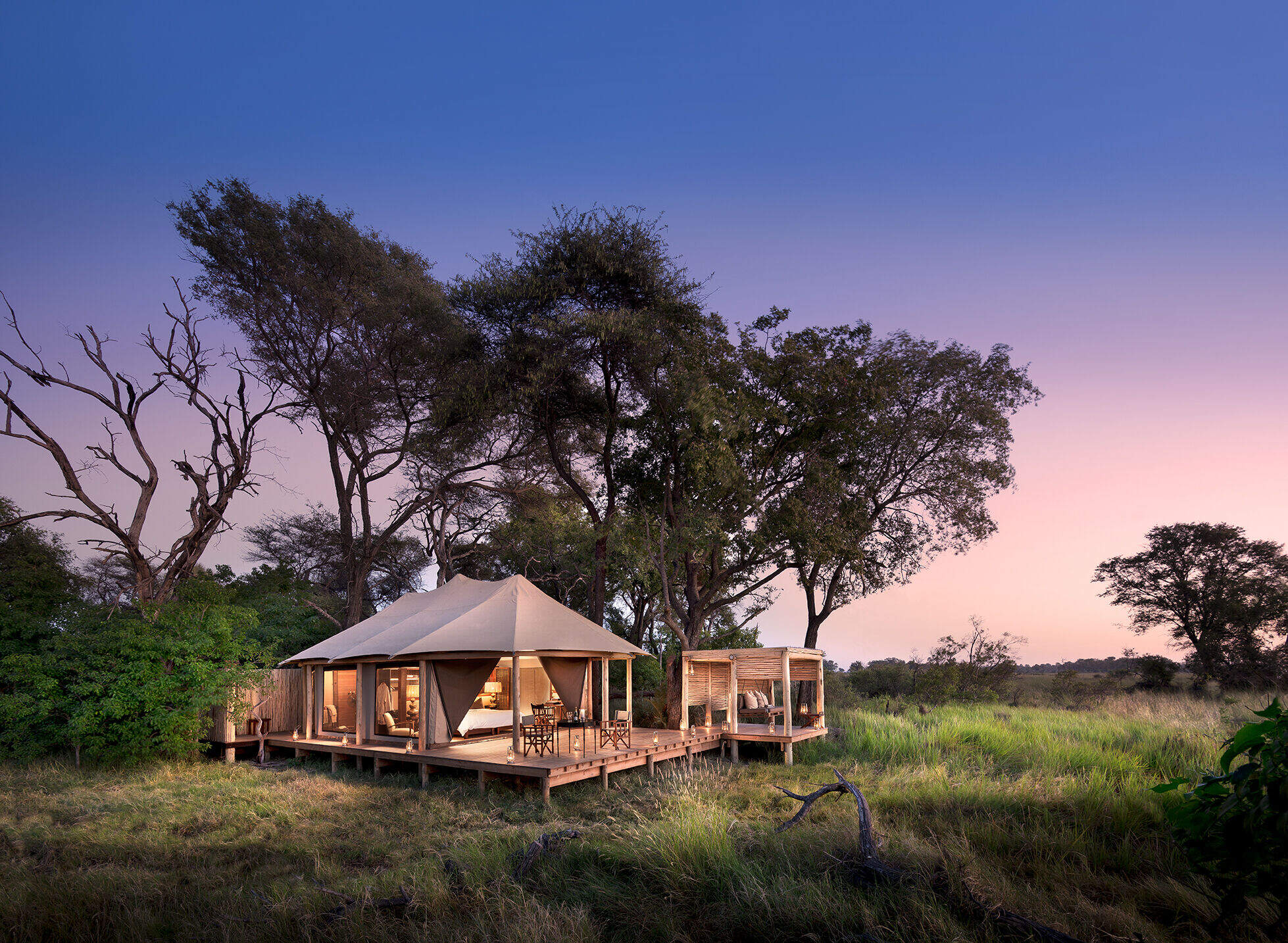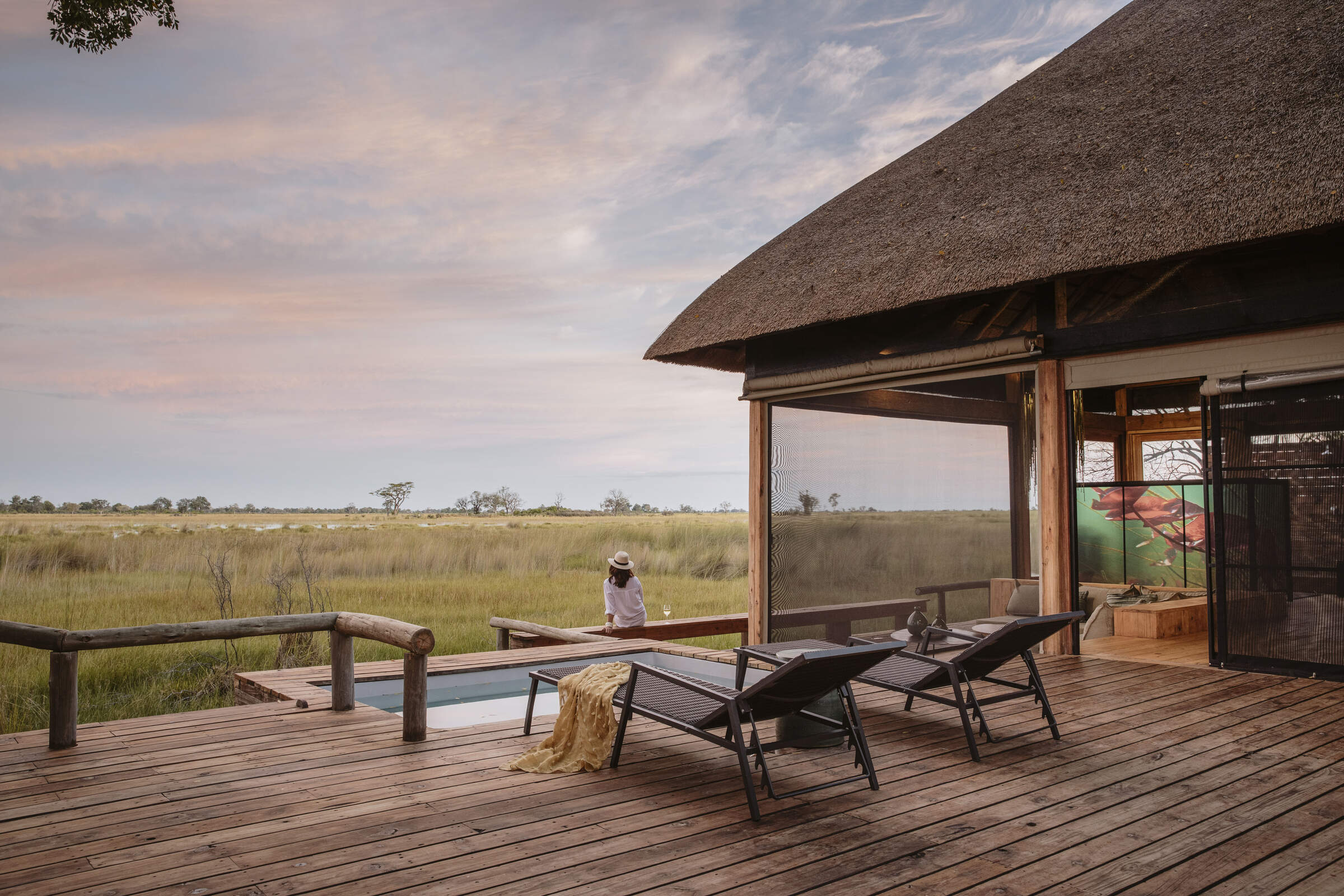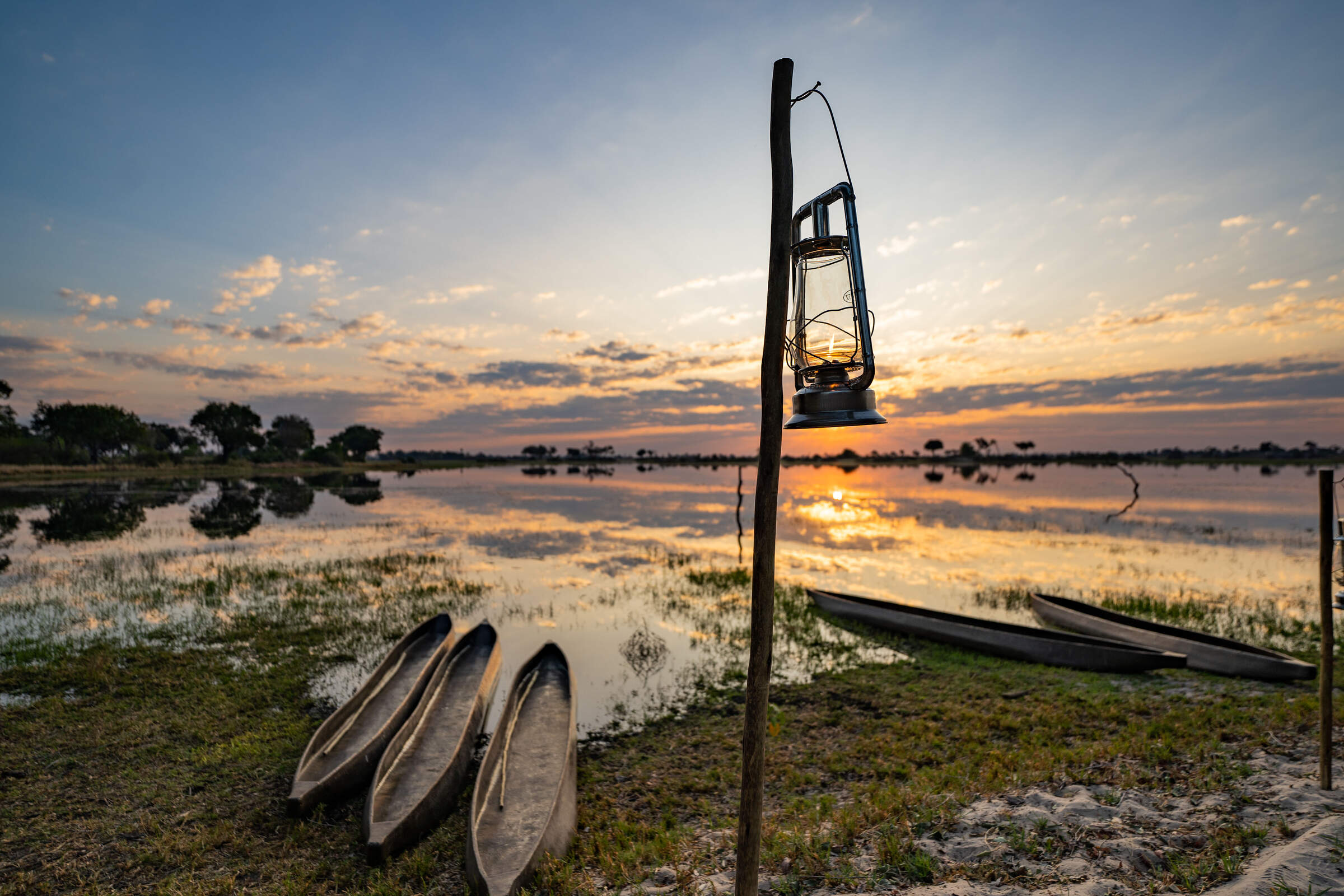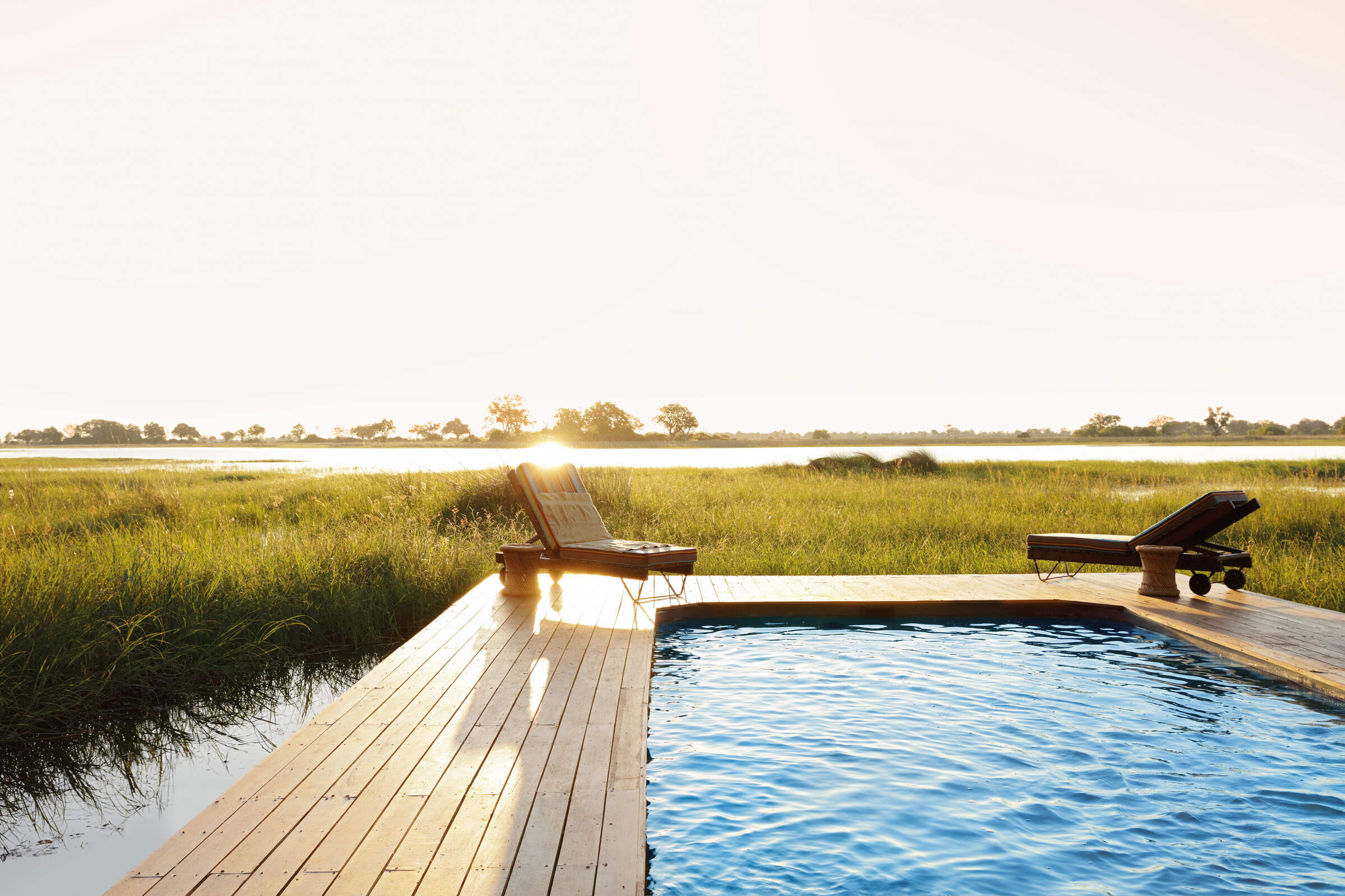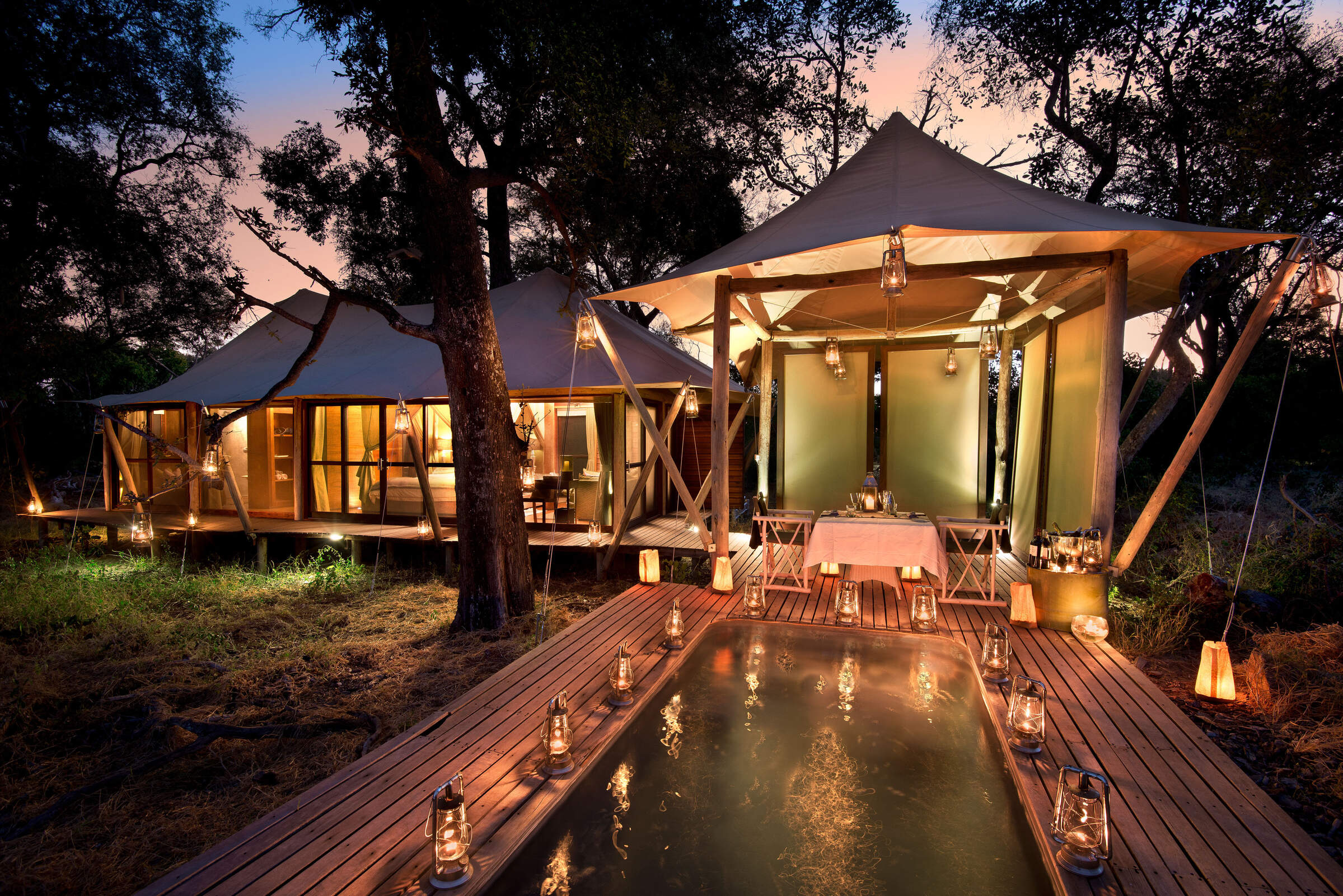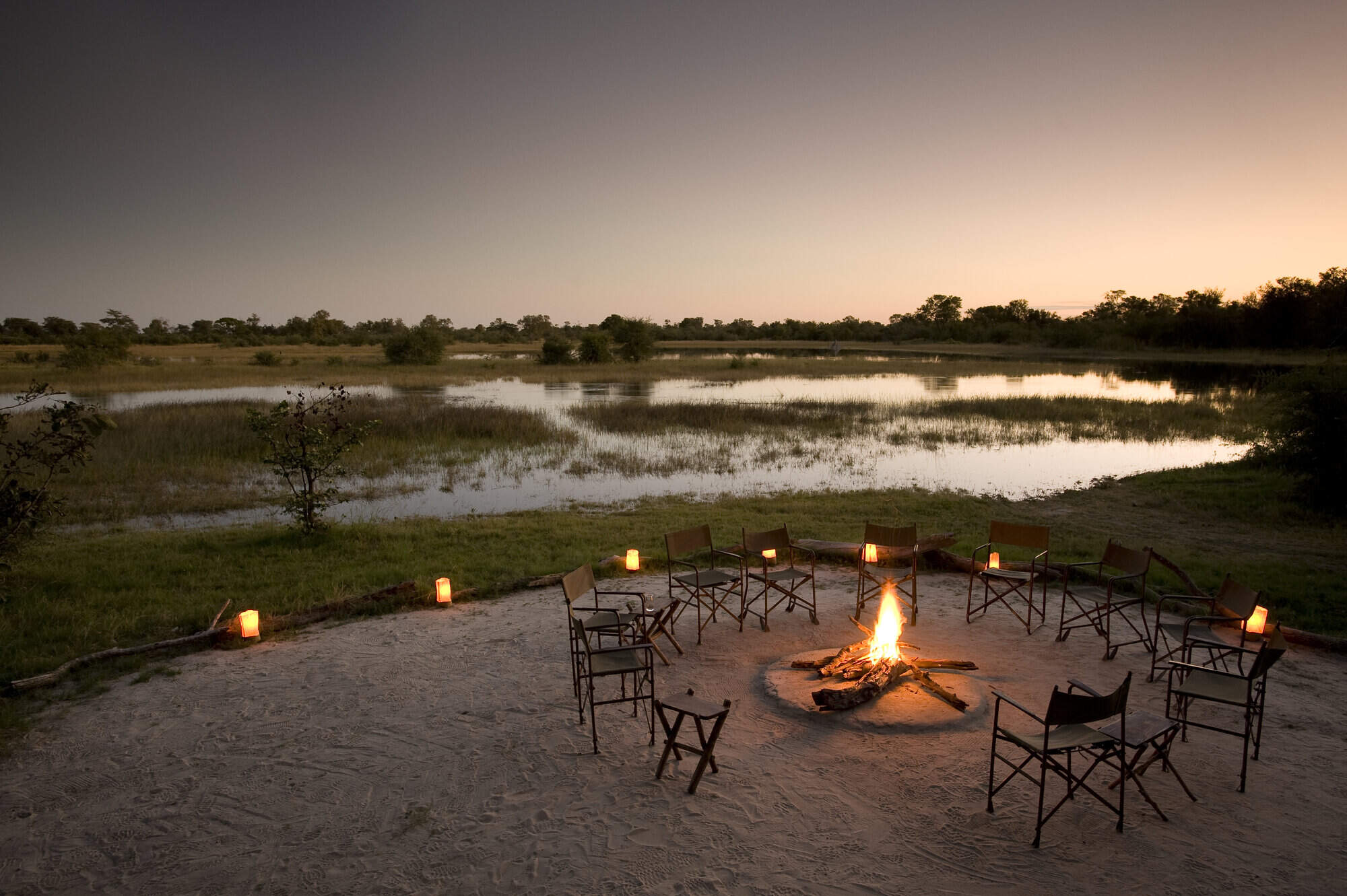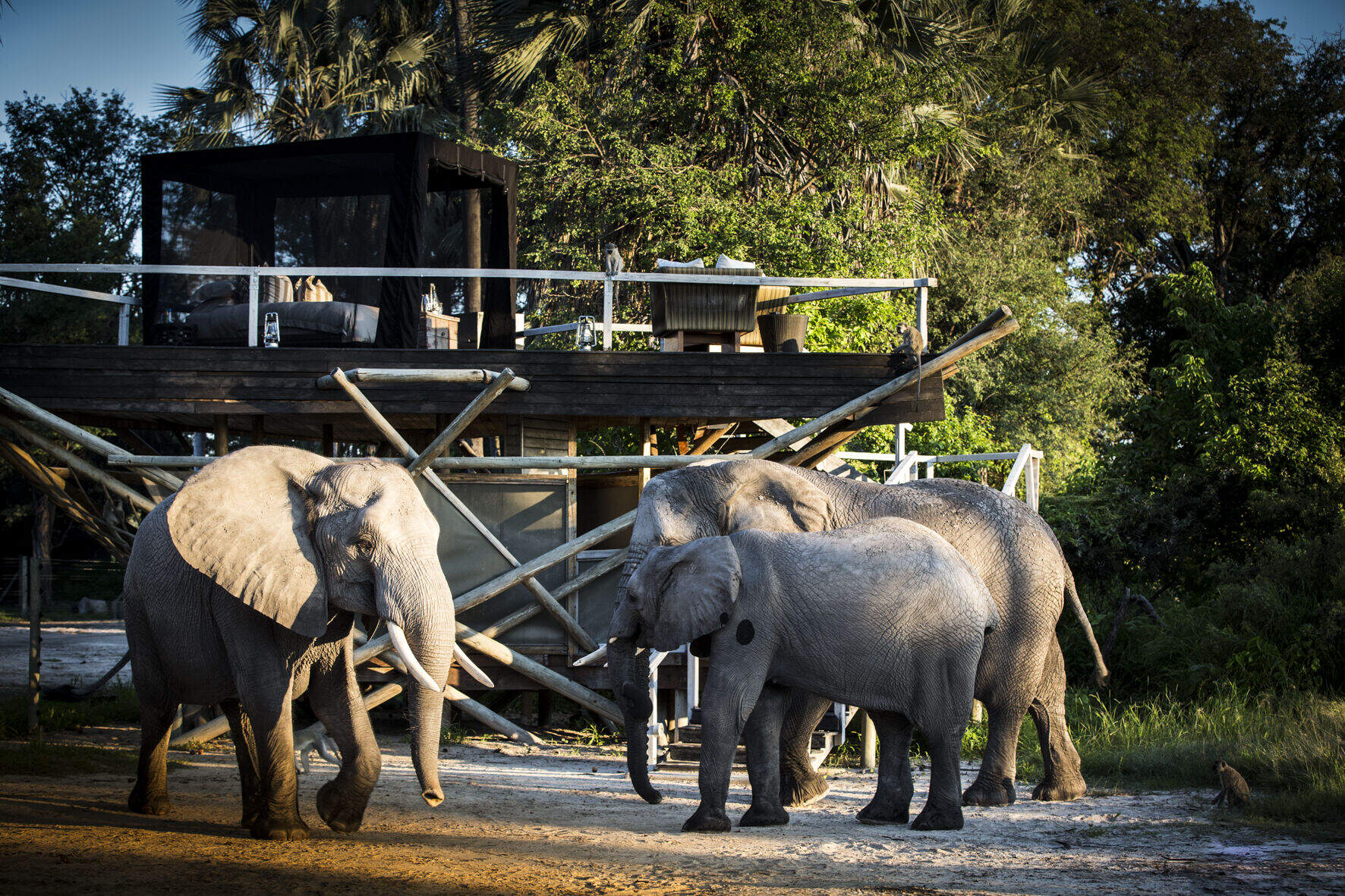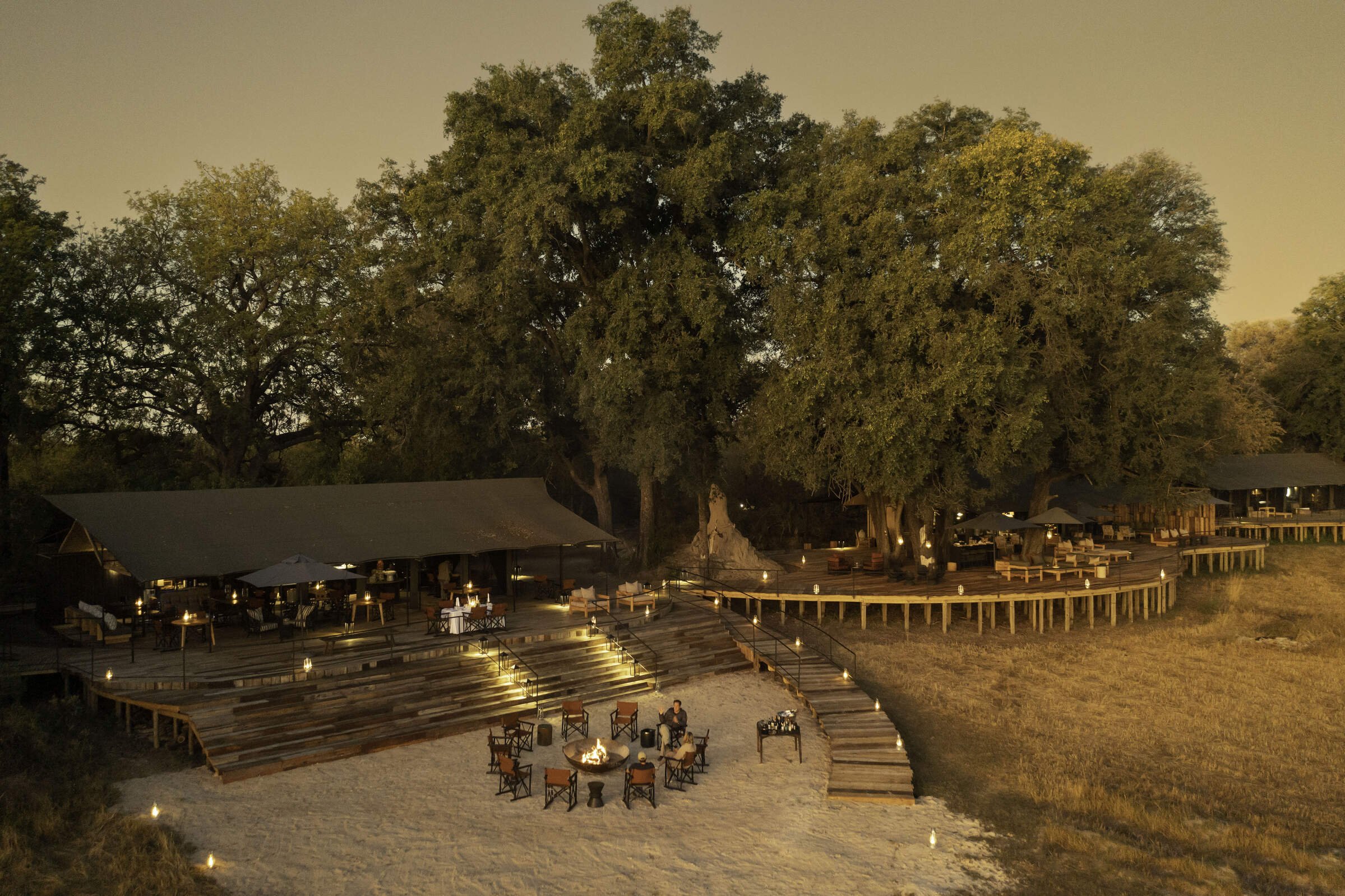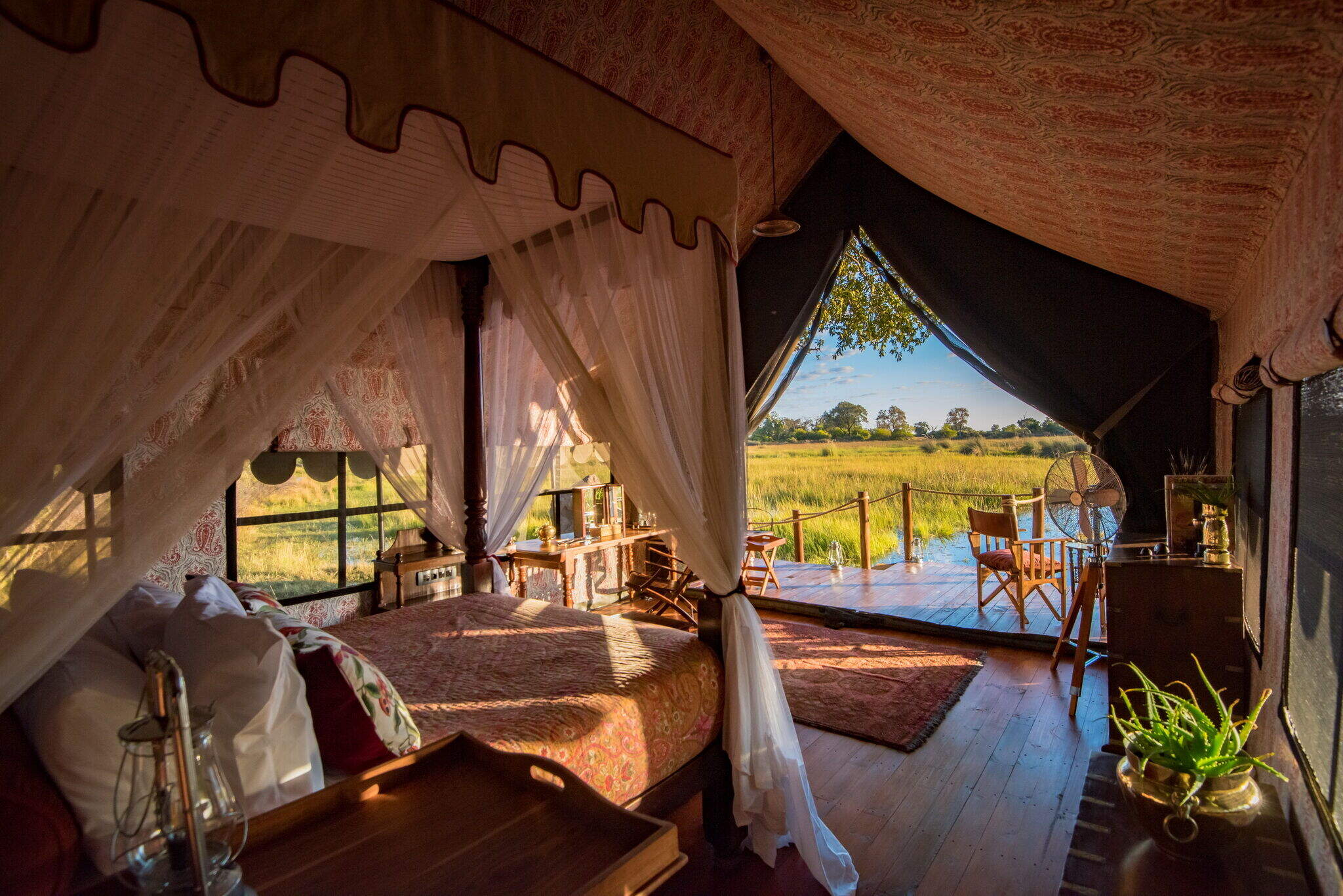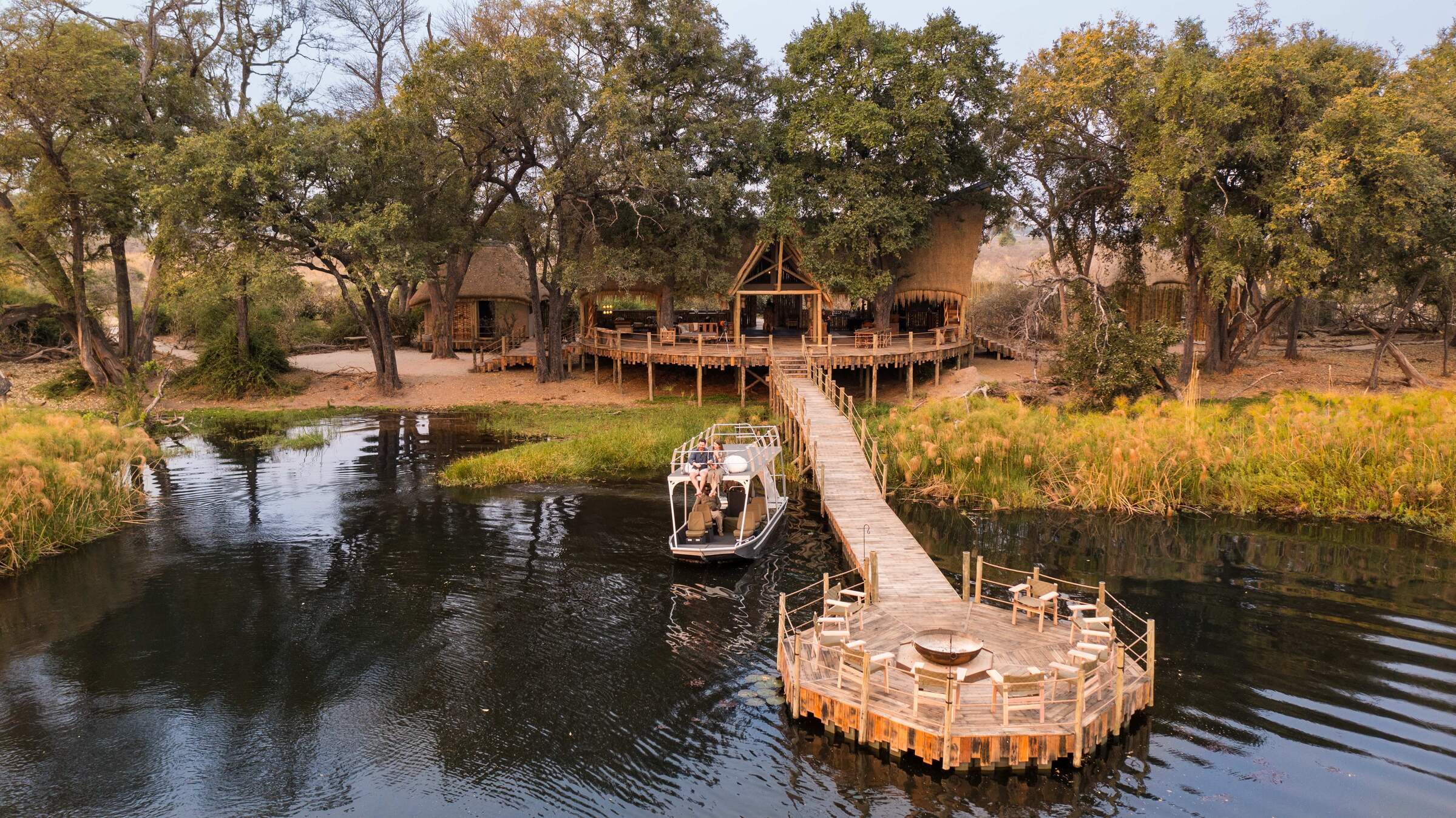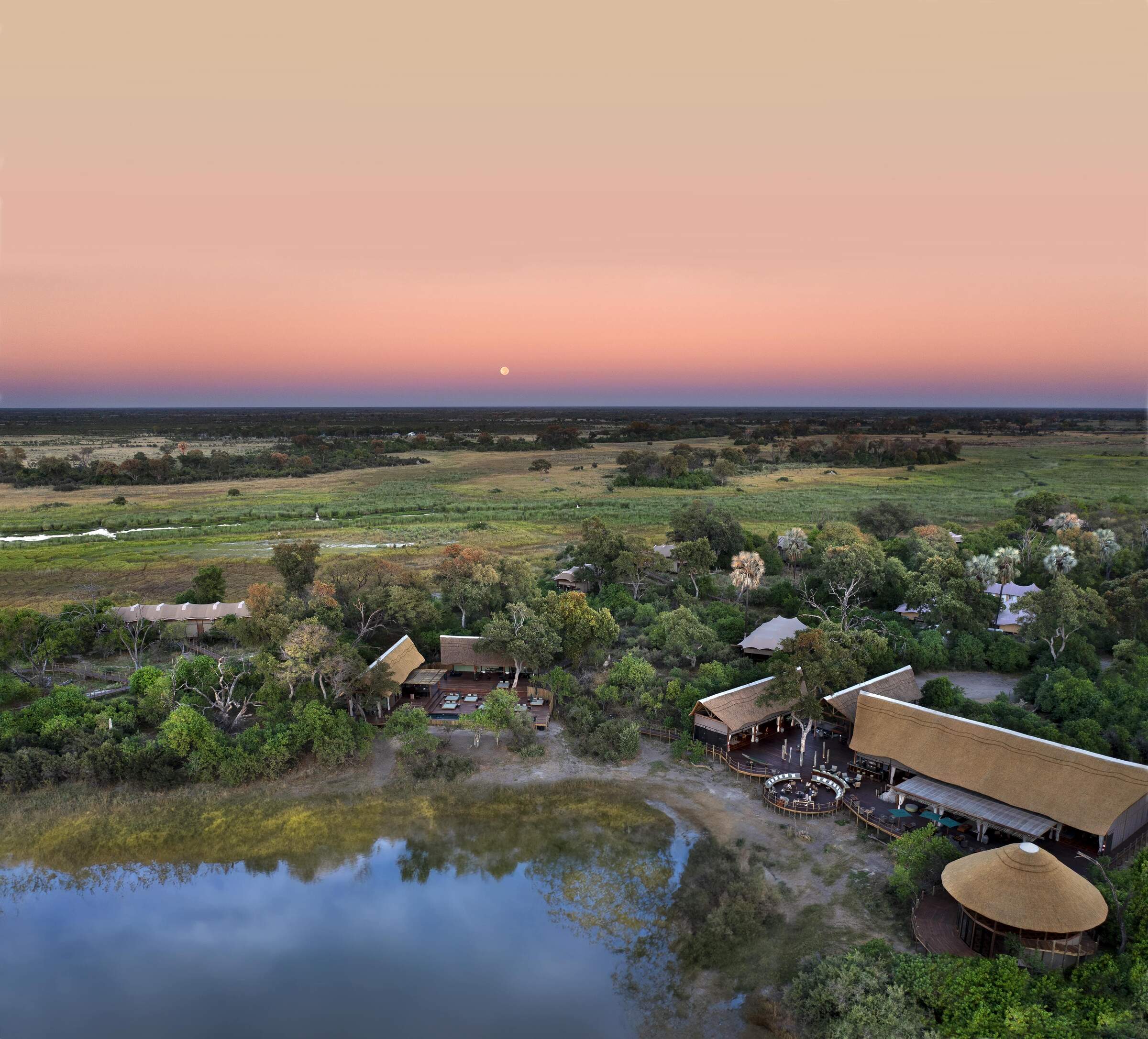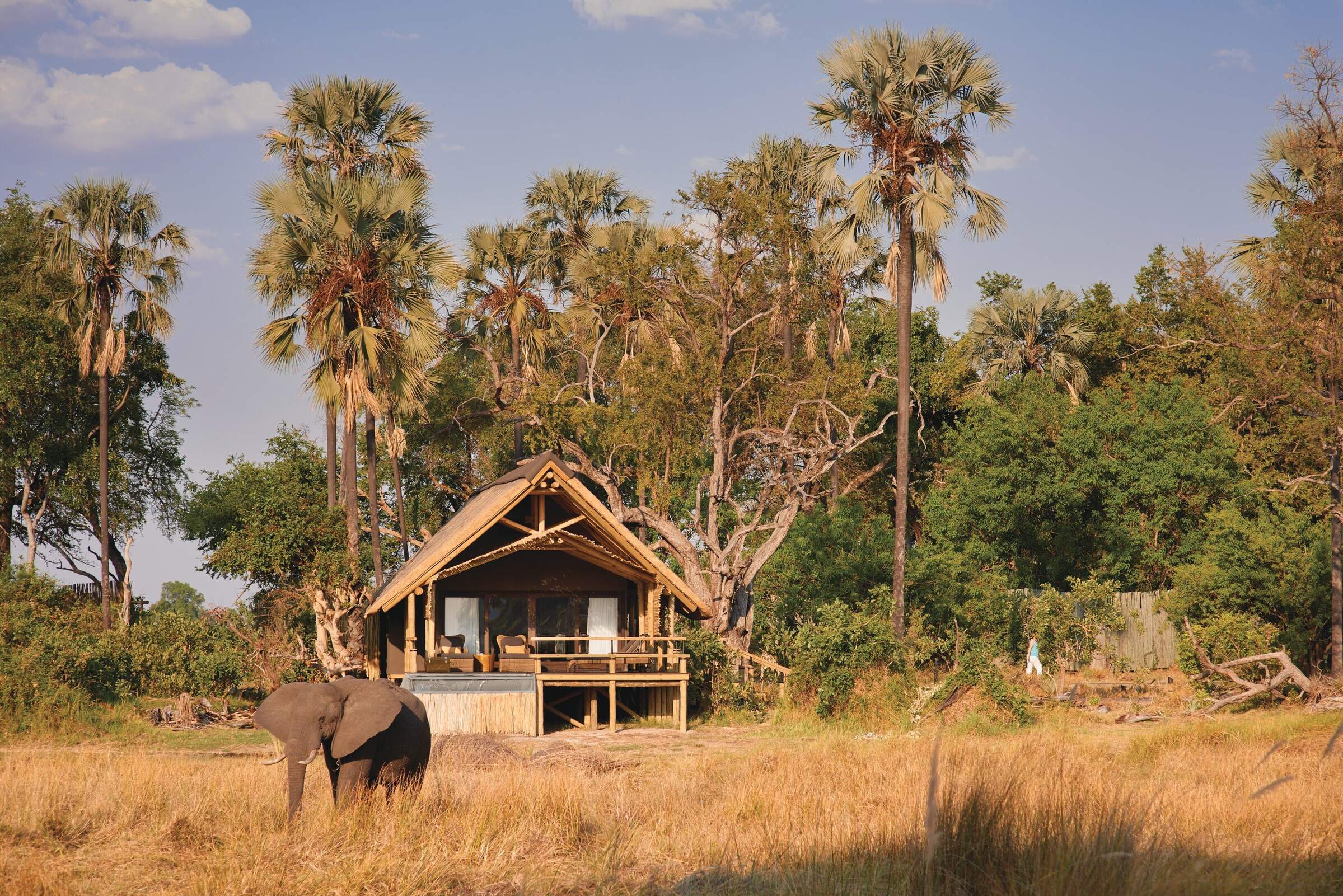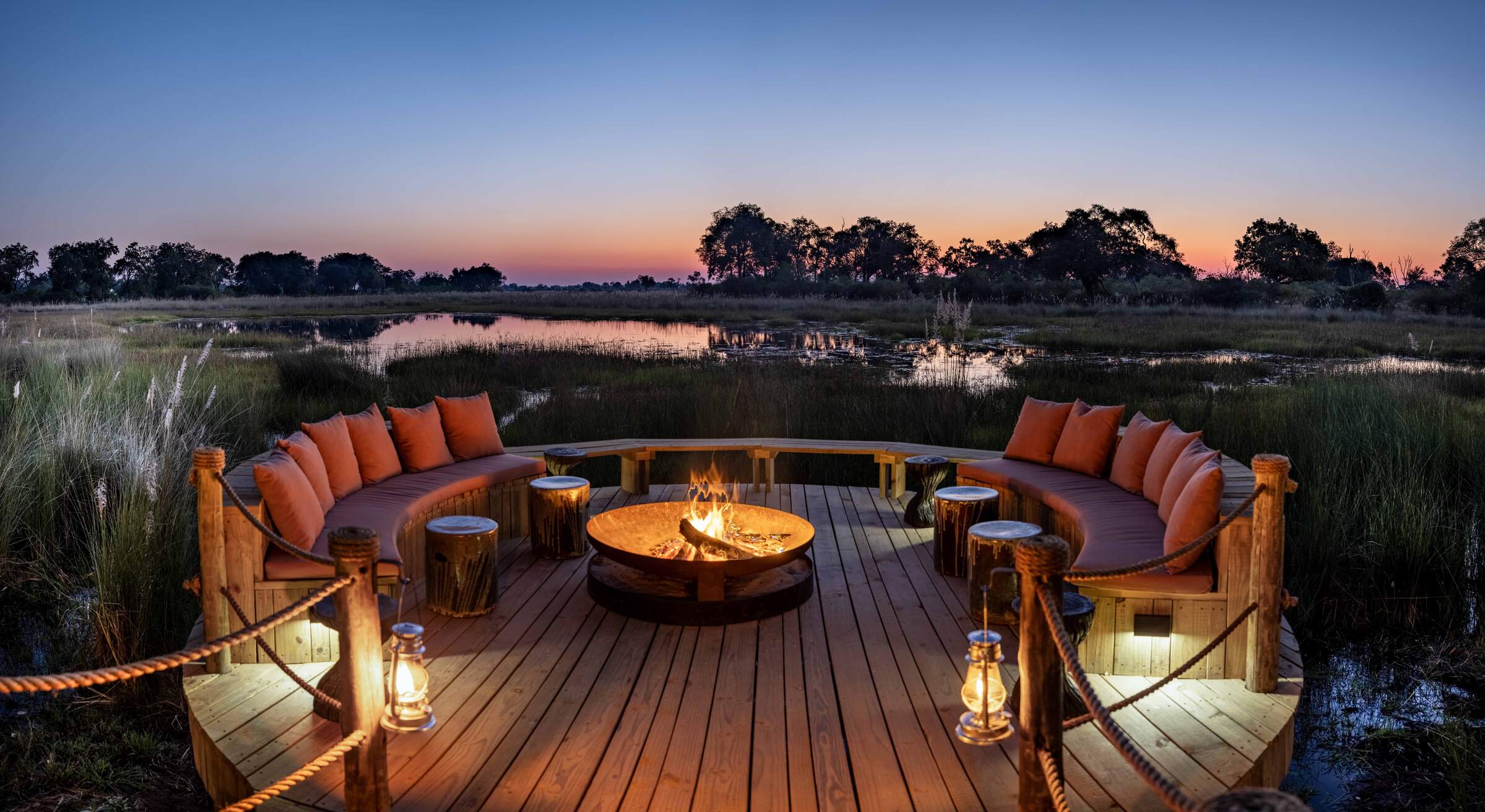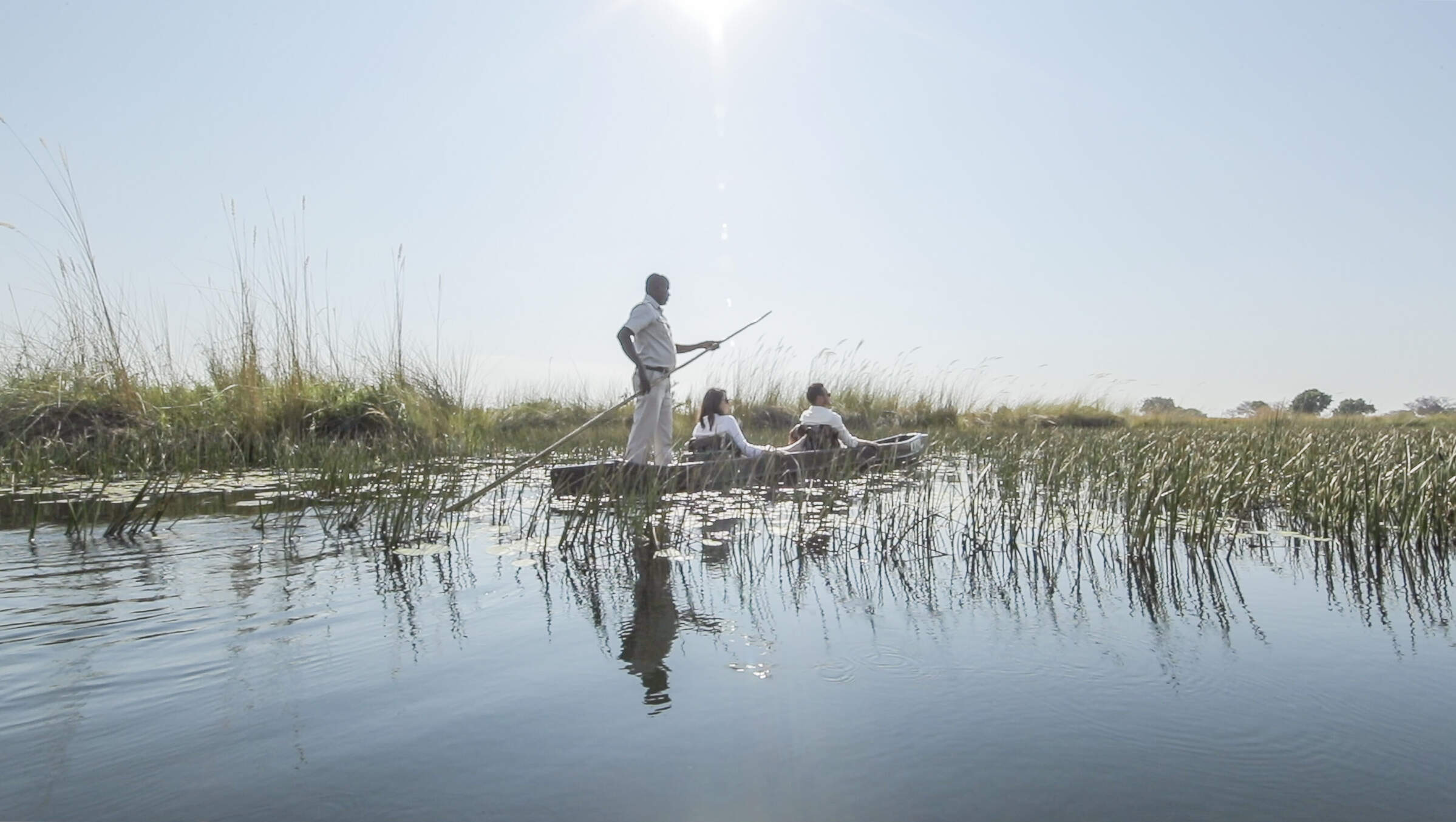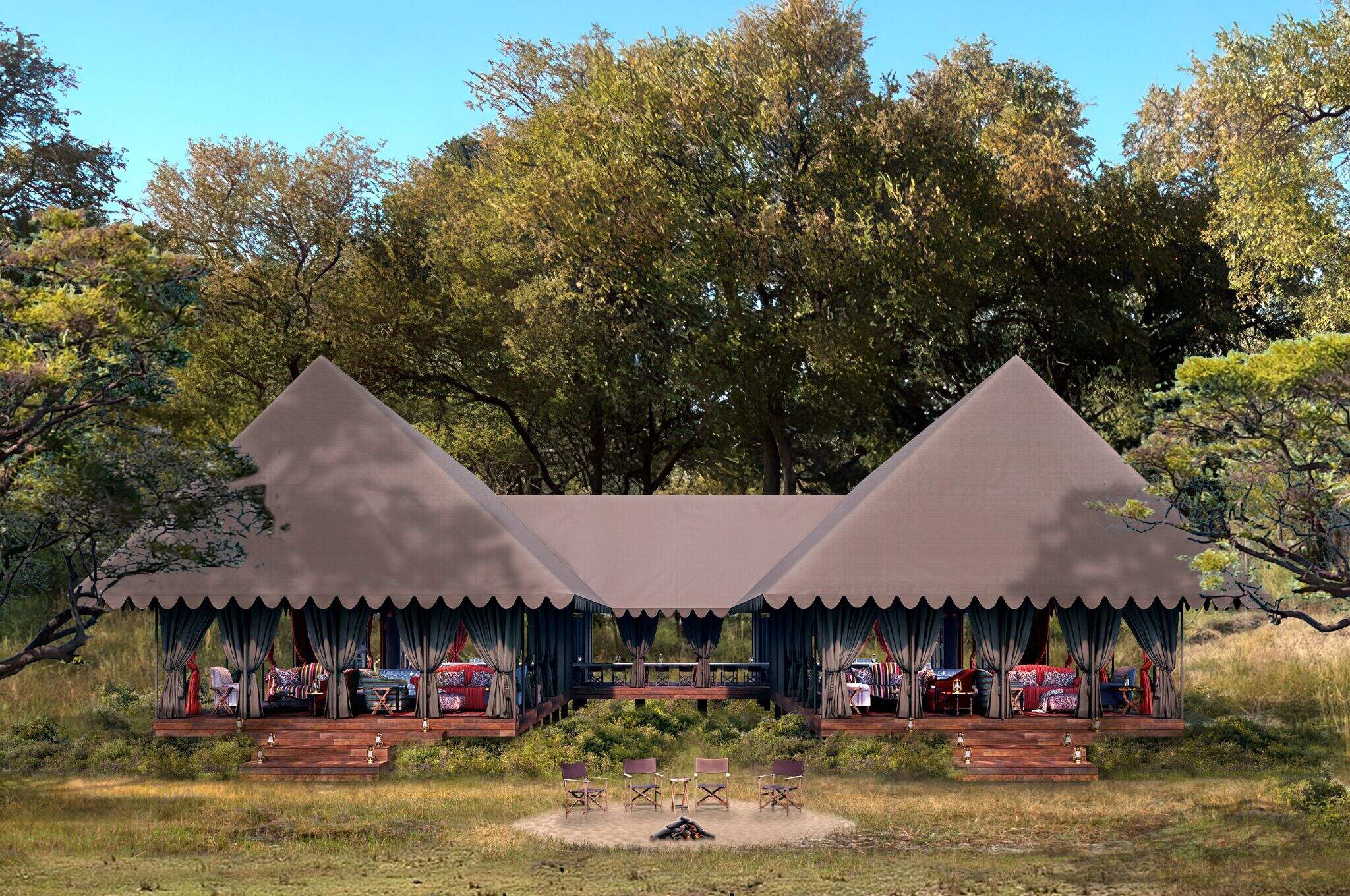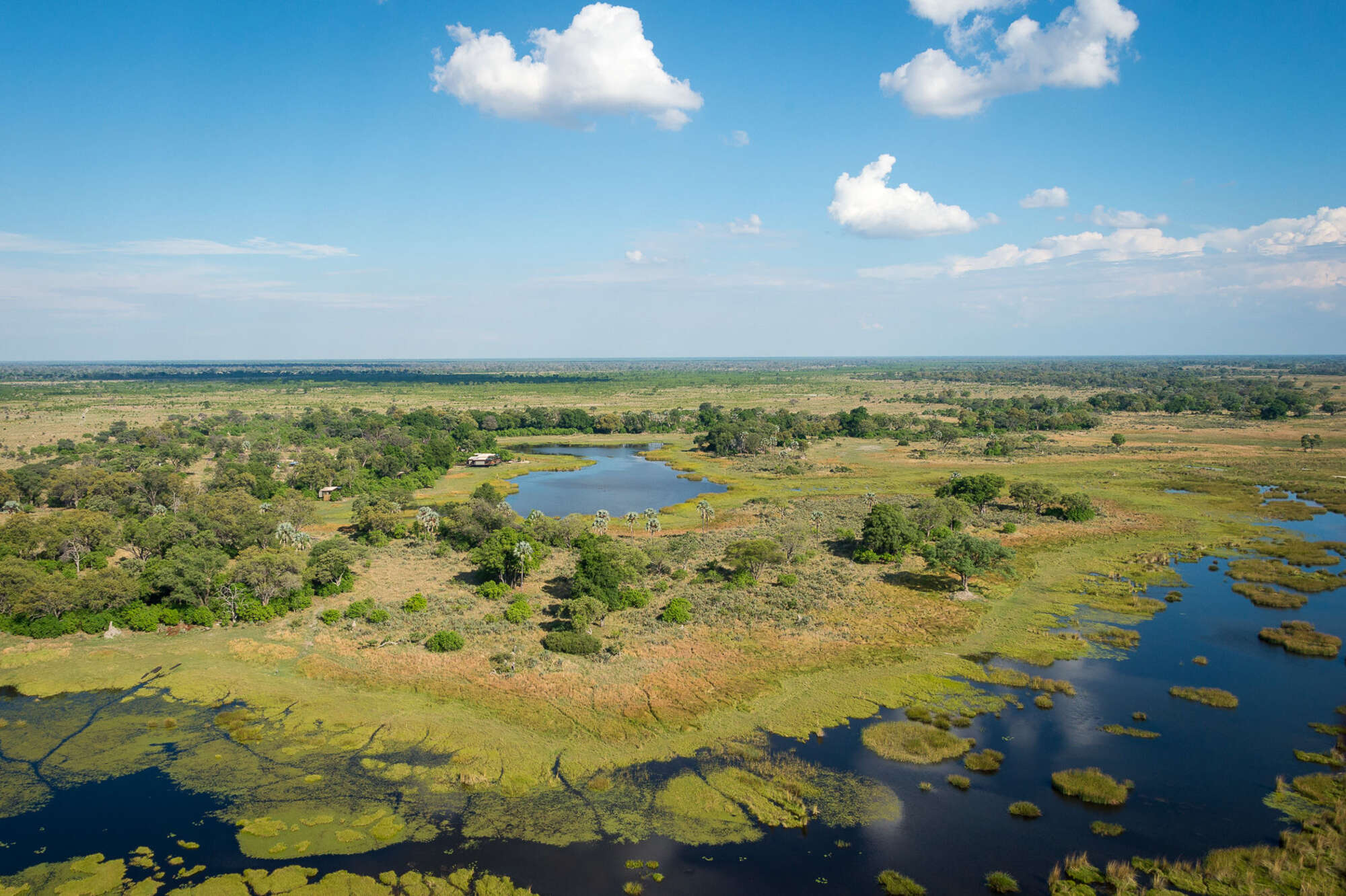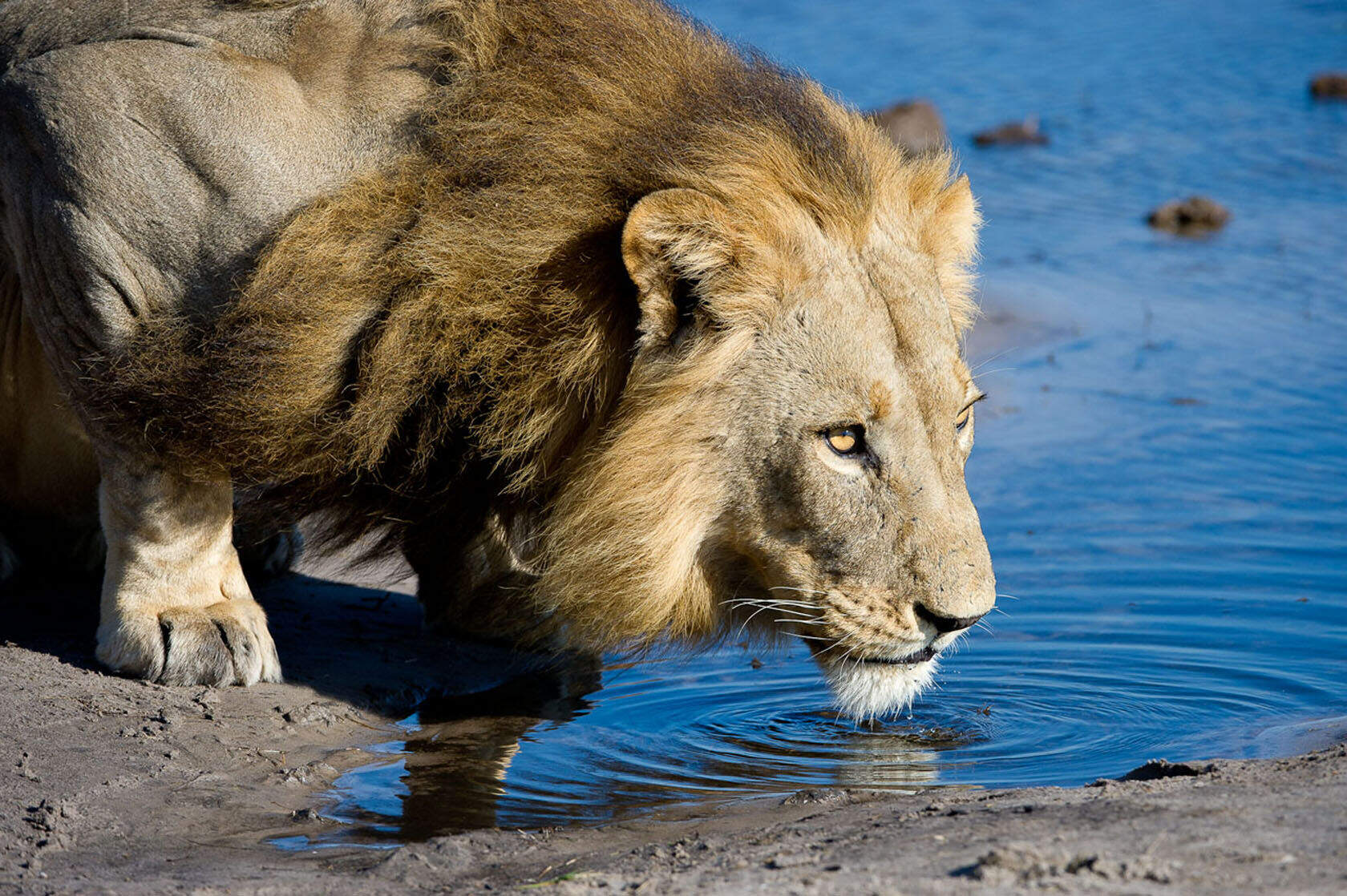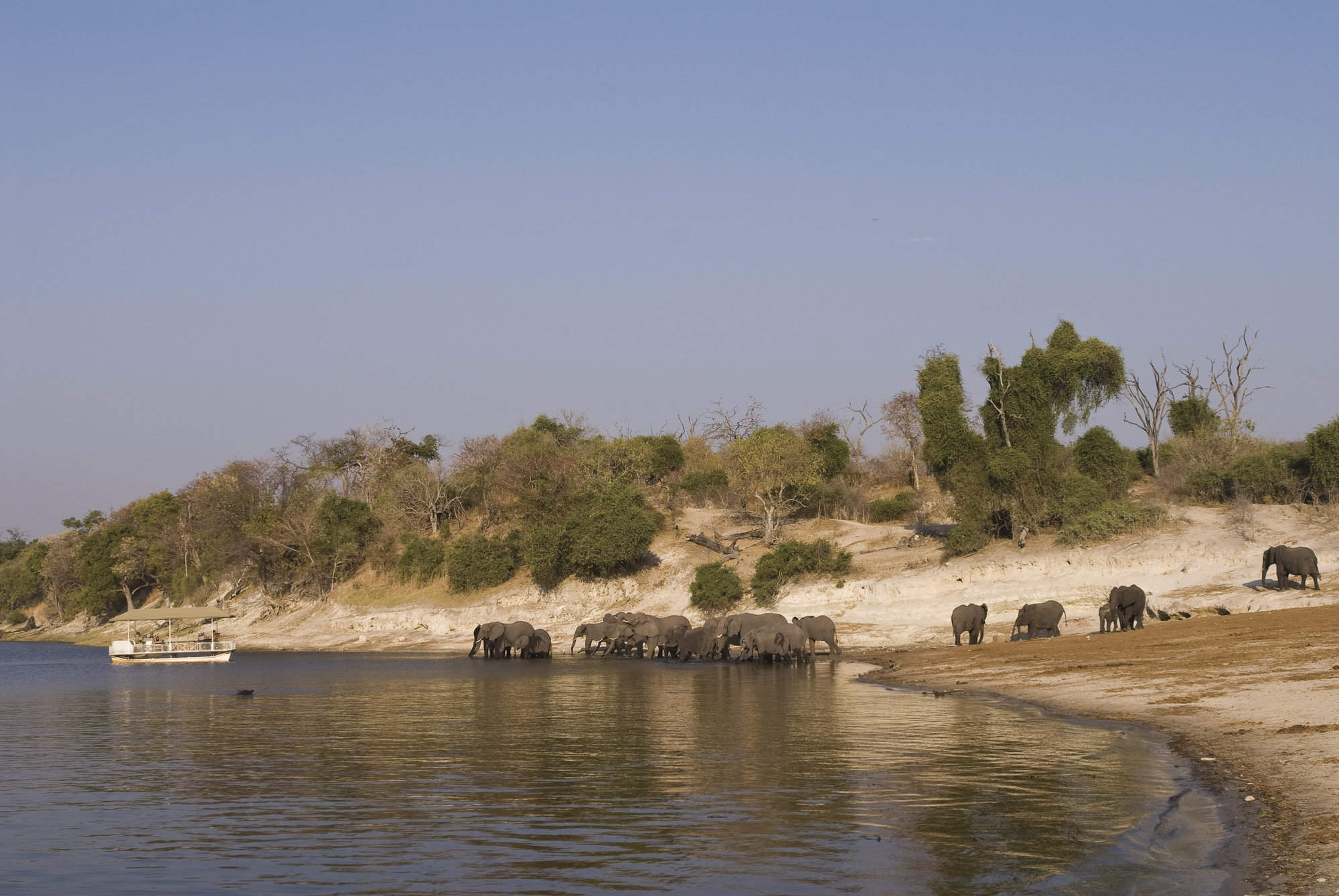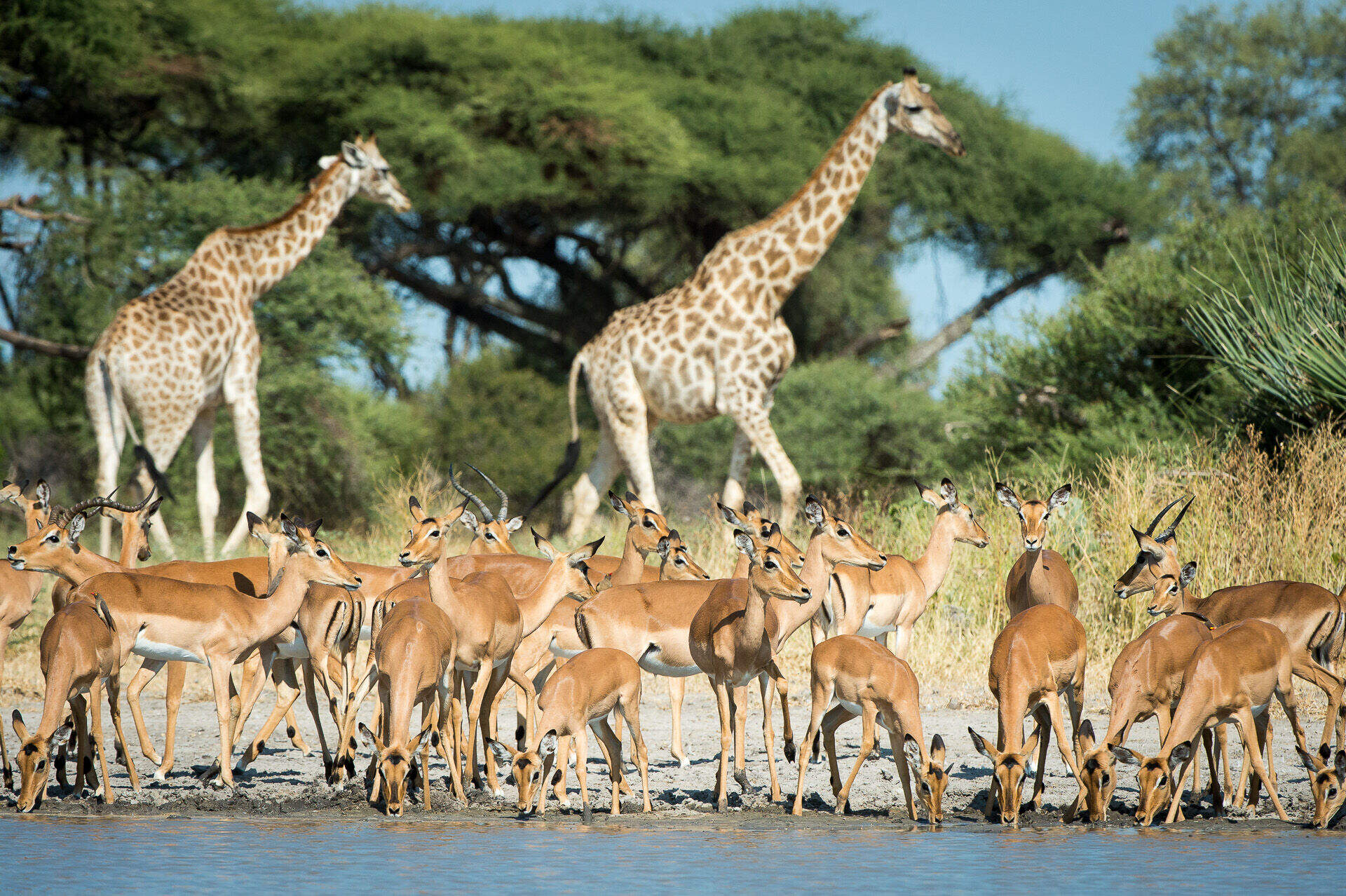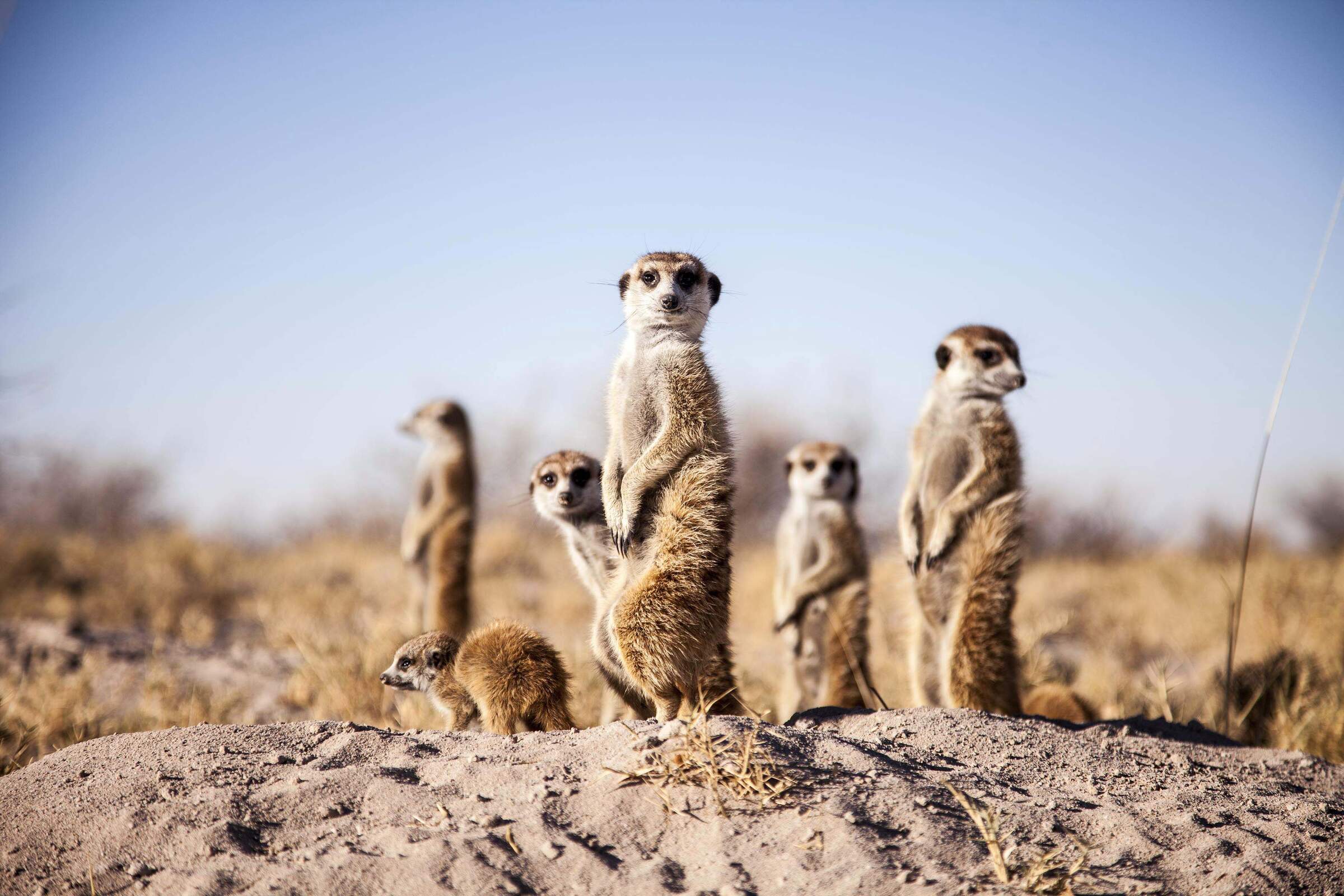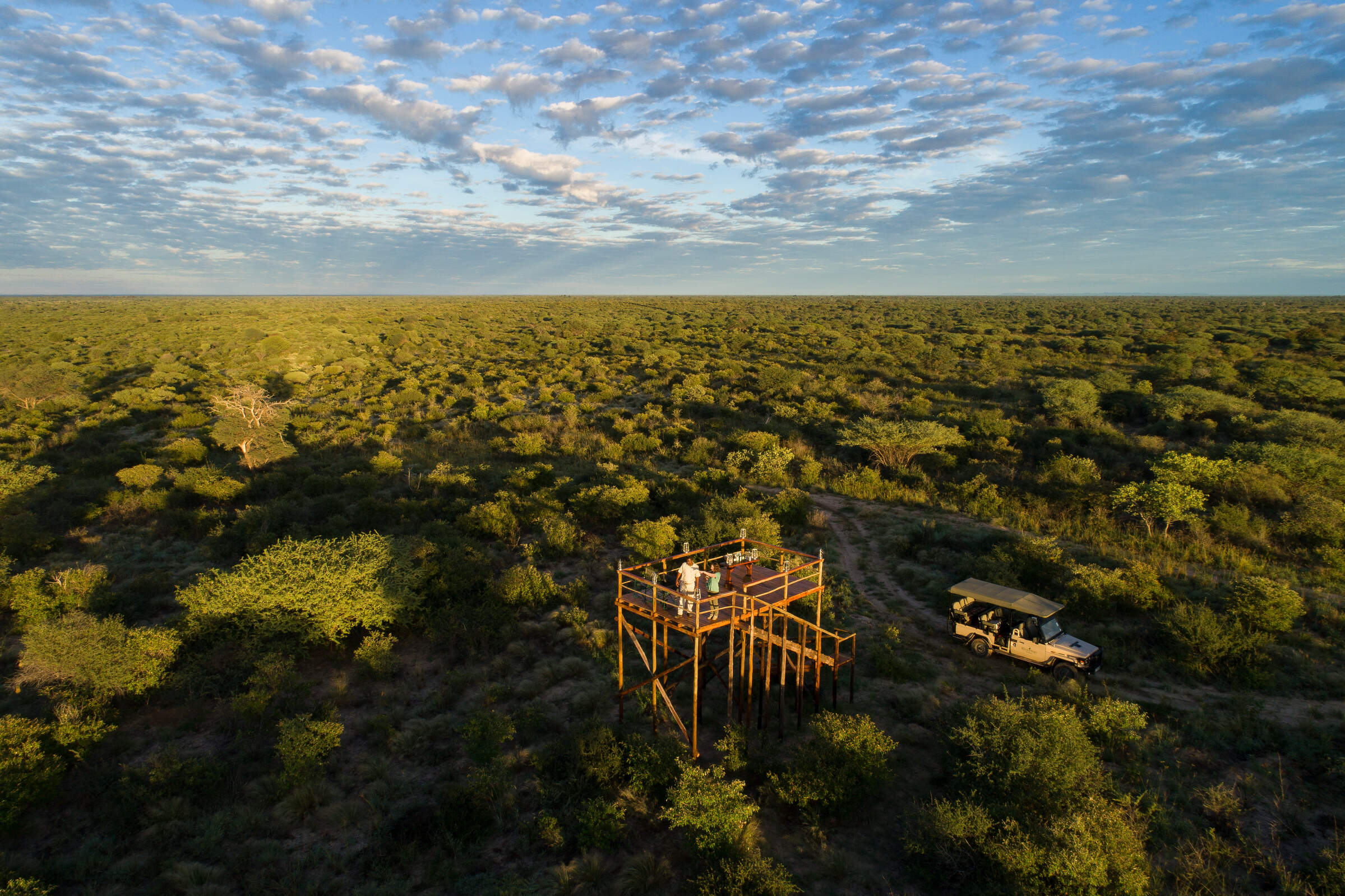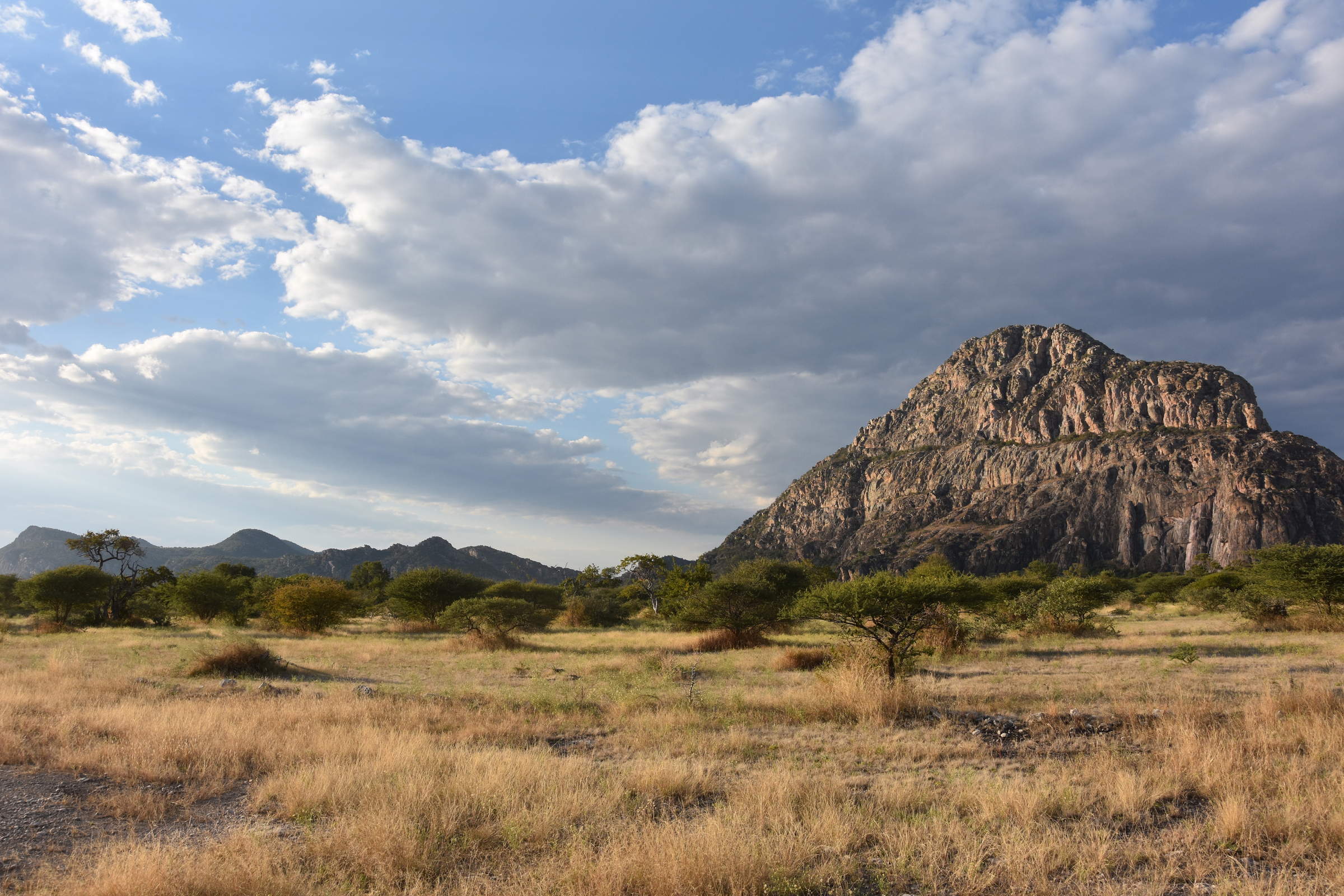Kanana: Our full report
In the heart of the Okavango Delta, adjoining Moremi Game Reserve, Kanana lies on the edge of a permanent channel.
The camp nestles among towering jackalberry (African ebony) trees, knobthorn acacias and sausage trees, in a wider environment of forests and open seasonal floodplains. This, combined with permanent channels and lush flood meadows, means that the camp is able to offer a very full range of activities.The nine tented chalets at Kanana Camp are large, structured tents raised on wooden decks. Spread out along wooden walkways and dried elephant dung pathways (which are much nicer than they sound!), all overlook the channel or seasonal floodplains in front of camp. Each chalet is constructed around a solid frame of thick wooden beams, around which thick canvas is stretched, giving the feel of a much more substantial wall.
At the front of each chalet is a shaded deck with two comfortable wooden chairs. The front 'wall' is almost fully meshed, with sliding doors. This, together with a high roof and mesh windows running along either side, lends an open and airy feel to the rooms.
Although the chalets look simple from the outside, we found that the interiors are spacious, airy and attractive, with polished hardwood floors and reed mats add warmth. Taking center stage are three-quarter-size twin beds – which can be made into a double on request – beneath a large walk-in mosquito net. On the writing/vanity table is information about the camp and area. An open steel-and-wood framed wardrobe incorporates a mirror, a small keylock safe and a luggage rack. On the opposite side of the room are a couple of armchairs and a floor-standing fan. We particularly loved the thoughtful little touches like the tin of homemade biscuits and the whisky decanter that appeared in the evenings.
The spacious en-suite bathroom is at the back of the chalet, reached through a wooden door. A glass-fronted walk-in shower enclosure gives the room a modern and light feel. There is also a flushing toilet and “his and hers” washbasins, plus a good selection of organic and environmentally friendly complimentary toiletries. The family room is consists of two bedrooms and a shared ensuite with an indoor and outdoor shower.
Kanana also has a Sleep Out Deck, where – weather permitting – guests can enjoy a night under the star studded African sky. The deck is a split-level timber platform with extensive views over the surrounding floodplain. On the upper level is a bed with a table and chairs; below are a toilet and basin. Near the foot of the platform is an old termite mound where there are a couple of directors’ chairs, and a cosy fire is lit so you can sit and enjoy the night sounds of the bush. For security, an armed guide is stationed nearby in a separate tent. The Sleep Out Deck is about a 15-minute drive from camp and guests wishing to take advantage of it are normally driven out after dinner, then woken up in the morning with tea and coffee and driven back to camp for breakfast.
Kanana's main lounge and dining area is arranged in a circular fashion on raised decks around an impressive ancient strangler fig tree which grows up through the middle of the main area. This open-sided structure is essentially split into three sections, including two comfortable seating areas with sofas and a selection of coffee-table books. One of these incorporates the bar area, where guests are invited to help themselves from a sideboard containing a selection of spirits and wines, and a wooden cupboard housing a large fridge.
Although there is no curio shop per se, a small selection of curios for sale are displayed in two glass-fronted cabinets.
Between the two lounge areas is an indoor dining area with a long dining table – where everybody normally eats together – as well as a tea- and coffee-making station. For outdoor dining, however, there’s a raised deck to the rear of the central area.
Beyond this, steps lead down to a sandy firepit with views out onto a grassy floodplain. At the time of our most recent visit, in January 2024, this was being grazed by a herd of red lechwe and a distant hippo. With the arrival of the flood this area fills with water and the camp’s water activities are conducted from the jetty here. The firepit is often a popular gathering spot to swap stories after dinner.
Just a short walk from the main area, a really nice pool deck set with numerous loungers surrounds a larger-than-average-size pool for a camp in the Okavango.
Activities at Kanana are as varied as the landscape around the camp. They include day and night 4WD game drives, mokoro trips and motorboat excursions, as well as bush walks with an armed guide.
In recent years the Okavango has seen lower flood levels in this area. The game quality has become increasingly better year-round at Kanana. On our most recent visit, we had incredible game viewing, with three leopard sightings, numerous lion sightings and a pair of hyenas playing in a muddy waterhole. But it was the seldom-seen cheetah brothers that stole the show, with two successful hunts.
We also enjoyed a long bush walk, where the focus was to burn off some safari food, along the way encountering a pod of hippo, herds of red lechwe and some rather noisy baboons!
On previous visits, between May and November, the focus at Kanana has been firmly on water-based activities rather than game-viewing. On one visit our team did a mokoro trip when, besides some fabulous water birds, a close-up sighting of the rare sitatunga antelope was the highlight. You can also take a rod out on a boat trip and try your hand at fishing.
As the water levels in the Delta rise each year, the seasonal floodplains and channels around Kanana are usually filled – affecting the concentrations of big game in the area. We thought the area very beautiful on our game drive at this time of year, but game (even plains game) was thin on the ground. This matched our observations of the game densities seen from other camps in this private reserve, Nxabega and Pom Pom.
Kanana also has exclusive access to one of the Okavango's largest heronries, about 35–40 minutes by boat from the camp. The boats weave and wind their way through a series of papyrus- and reed-lined channels before reaching the breeding site for pink-backed pelicans, yellow-billed and marabou storks, grey herons, ibises and assorted egrets. This remarkable birding spectacle is usually best between mid-July and October.
With families in mind, Kanana can offer the Young Explorers Club. Families with children as young as seven years old can hire the services of an experienced private Specialist Family Guide. The guide’s role is to provide the family with engaging, age-appropriate activities on a flexible schedule. Activities vary considerably from the standard safari options. During their stay, children may be involved in activities as diverse as making bows and arrows, playing football with the camp staff, fishing, identifying tracks and learning to make and cook over a fire.
Our view
The environment around Kanana is particularly beautiful, the camp's guides are generally very good, and the water activities are excellent. If you visit between around July and October, we'd be surprised if even those with only a passing interest in birds failed to be impressed by the sheer magnitude and variety of birds at the heronry. However, this isn't a camp for a first-rate game safari between around May and November, when water levels are high.
Geographics
- Location
- Okavango Delta Safari Reserves, Botswana
- Ideal length of stay
- Two to three nights is usually perfect here. Most visitors will use Kanana for water activities, particularly during the dry season, and combine it with a good camp for big-game and land-based safaris.
When Kanana is combined in the same itinerary with one of its other sister camps – Shinde, Shinde Footsteps, Okuti or Dinaka – there may be a slightly reduced rate. Please ask us for more details and whether this might apply to your trip. - Directions
- The camp is accessed by a 15–20 minute light aircraft flight from Maun, followed by a five- to ten-minute transfer from the airstrip.
- Accessible by
- Fly-and-Transfer
Food & drink
- Usual board basis
- Full Board & Activities
- Food quality
- Meals at Kanana are usually sociable occasions around a communal table – although special requests and private dining can usually be catered for.
On our most recent stay in January 2024 the food was incredibly tasty! The camp can cater for most dietary needs– vegetarian, vegan, coeliacs etc – but they must be informed well in advance.
The day starts with a wake-up call, when tea, coffee, juice or hot chocolate is served to your tent. Breakfast is served before the morning activity. We had a choice of cereals, fresh and stewed fruit, and toast, as well as a full cooked option.
For brunch, after the morning activity, we were served yummy lasagne, Okavango fish (tilapia), mushroom and parmesan pasta, with roasted butternut squash and sweet peppers, homemade bread and a cheese platter.
For afternoon tea, before departing on our afternoon activity, we had a choice of sweet and savoury treats served with iced tea, homemade lemonade, hot and iced tea and coffee. We loved the spicy quesadillas and the chocolate toffee cake.
Dinner is generally three courses and once again did not disappoint. For starters we had a very tasty butternut soup and homemade bread. This was followed by beef fillet, alongside a mixture of roast vegetables, and a spinach quiche. We finished off with crème brulé for dessert. - Dining style
- Group Meals
- Dining locations
- Indoor Dining
- Further dining info, including room service
- There is no room service.
- Drinks included
- Soft drinks, bottled water, spirits, local beers and a selection of (generally) South African wines are included. Imported wines and spirits and champagne cost extra – and may need to be requested in advance.
Guests are usually given a water bottle on arrival with filtered water, which they are encouraged to top up from the filtered supply in the camp's main area. Each room is also provided with glasses and a flask of filtered drinking water.
Special interests
- Family holidays
- Kanana is ideal for a family safari in Botswana with a large family tent, child-friendly meals, and no need to book a private vehicle for kids under 12. A private vehicle adds flexibility, and the Young Explorers programme offers a guided, family-focused safari.
- See ideas for Family holidays in Botswana
- Birdwatching
- Kanana offers motorboat access to an enormous heronry where, from mid-July onwards, many migratory waterbirds come to nest. With yellow-billed, open-billed and marabou storks, reed cormorants, pink-backed pelicans, grey herons and sacred ibis, it’s a superb opportunity for birdwatchers in Botswana.
- See ideas for Birdwatching in Botswana
- Walking safaris
- For a walking safari in Botswana, Kanana offers bush walks with an experienced, armed guide who will explain tracks and signs. Often following old hippo paths, these are usually slow walks, with a view to giving visitors a deeper understanding of the environment.
- See ideas for Walking safaris in Botswana
Children
- Attitude towards children
- Kanana has a large family tent with two bedrooms and a shared en-suite bathroom. There is enough space to sleep a family of five. Kanana has a minimum age of 7 years.
- Property’s age restrictions
- Kanana has a minimum age of seven years and does not require families to book a private vehicle.
- Special activities & services
- Young Explorers is available at Kanana from March to November, for a minimum of three nights. It is also available at sister camps in Botswana, including Shinde Footsteps, Okuti Camp and Dinaka. By combining this option across two or more camps, the whole family can experience the diverse areas of the Delta, with the same exclusive guide throughout.
- Generally recommended for children
- Kanana has a more relaxed child policy than most other camps in the Okavango Delta, where it's unusual for families with children under 12 years not to have to book and pay for a private vehicle. They also allow triple rooms, which can make Kanana comparatively economical for a small family. However, because children will generally accompany adults on all activities, we suggest that families with younger children may want to consider booking a private vehicle, which will allow for much greater flexibility.
- Notes
- The camp has a fence to restrict large game movement in camp. The camp is also in close proximity to water. Children must be under the constant supervision of their parents or guardians at all times.
Our travellers’ wildlife sightings from Kanana
Since mid-2018, many of our travellers who stayed at Kanana have kindly recorded their wildlife sightings and shared them with us. The results are below. Click an animal to see more, and here to see more on our methodology.

100% success

100% success

100% success

100% success

94% success

93% success

92% success

73% success

64% success

50% success

27% success

23% success

21% success

8% success

8% success

0% success

0% success

0% success
Communications
- Power supply notes
- There is a single charging point in each room.
The power supply supports the use of hairdryers but only those issued by the camp office. - Communications
- There is WiFi in the guest rooms, but no cellphone reception. Kanana uses radios to communicate with both its head office in Maun and its sister camps.
- TV & radio
- There is no TV or radio.
- Water supply
- Borehole
- Water supply notes
- All the tented rooms have plumbed hot and cold running water for showers as well as flush toilets. Guests are usually given a water bottle on arrival with filtered water, which they are encouraged to top up from the filtered supply in the camp’s main area. Each room is also provided with glasses and a flask of filtered drinking water.
Health & safety
- Malarial protection recommended
- Yes
- Medical care
- All the managers are first-aid trained and there are first-aid kits on site. The closest doctor is in Maun, which is a 25-minute flight. Medical evacuation is available from the camp in case of a serious emergency. Please note that it is only possible to fly out of camp during daylight hours as the bush airstrips do not have any lighting at night.
- Dangerous animals
- High Risk
- Security measures
- Because wild animals are known to move through Kanana, guests are escorted to their rooms when it is dark. There are foghorns in the rooms for use as alarms in an emergency.
- Fire safety
- There are fire extinguishers in all the rooms and common areas, as well as in boats and vehicles.
Activities
4WD Safari
Birdwatching
Boat trip
Fishing
Guided walking safari
Helicopter
Mokoro
Night drive
Private activities
Extras
- Disabled access
- On Request
- Laundry facilities
- A laundry service is included, including undergarments, although washing powder is provided for those who wish to do their own. If weather permits, laundry collected in the morning will be returned on the same day.
- Money
- There is a small key lock safe in each room. There are no exchange facilities at the camp.
- Accepted payment on location
- Mastercard and Visa credit cards are accepted; Diners and Amex are not. Cash payments may be made in the form of South African rand, GB sterling, US dollars, euros and Botswana pula.
Other lodges in Okavango Delta Safari Reserves
Alternative places to stay in this same area.
